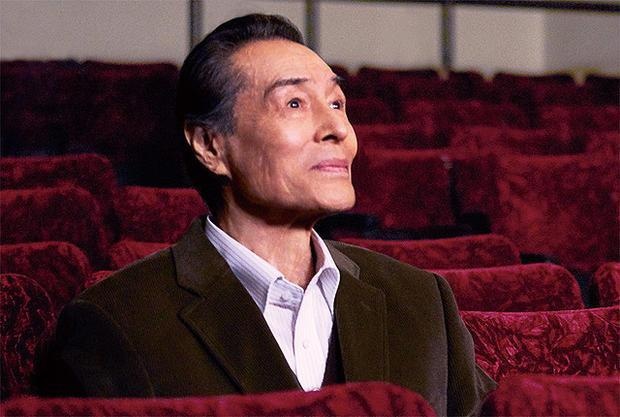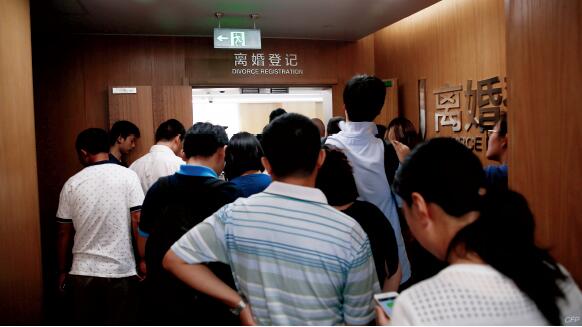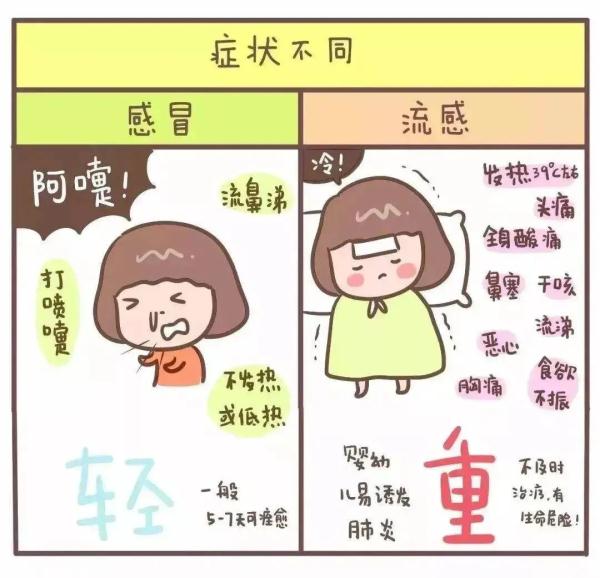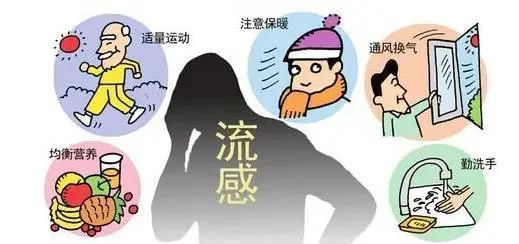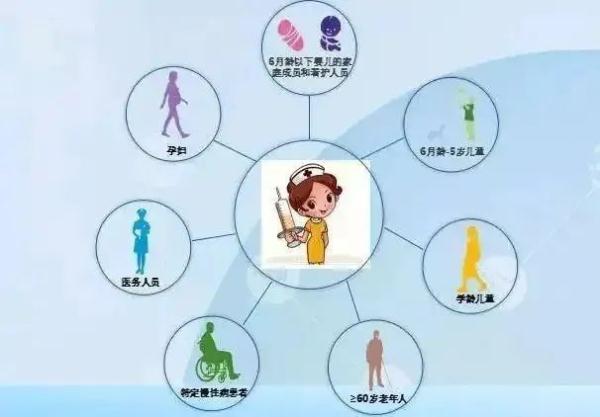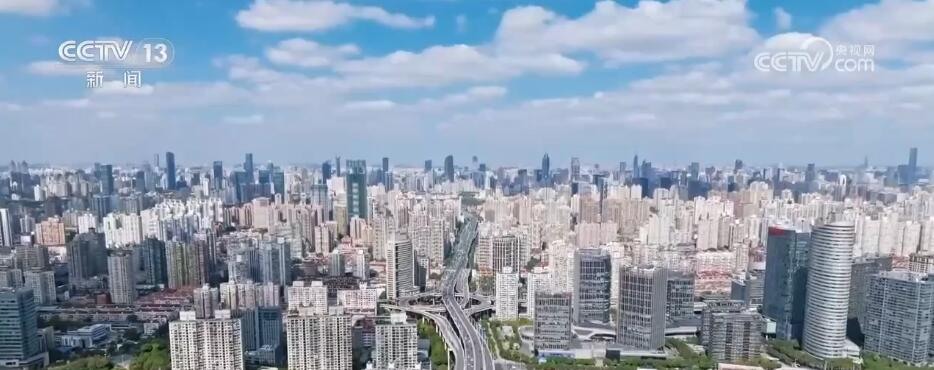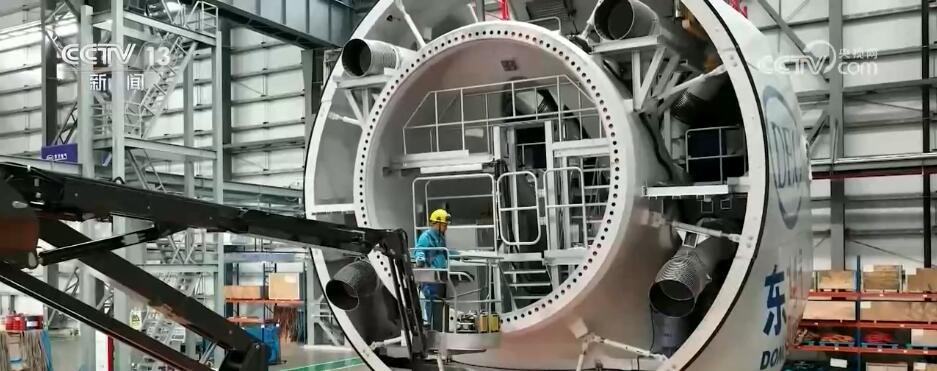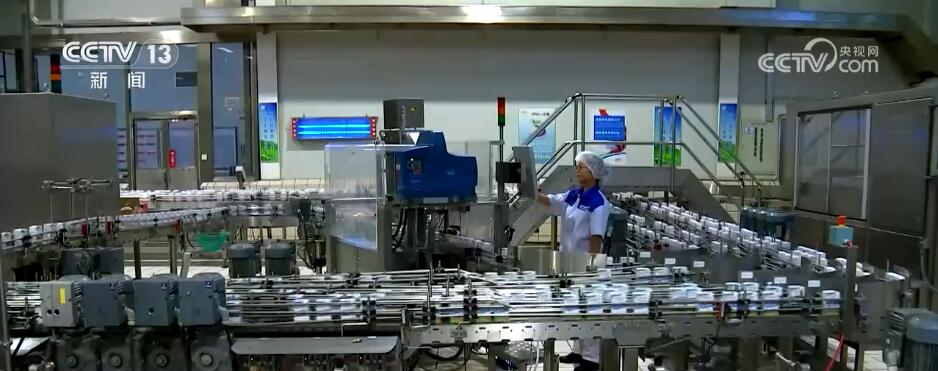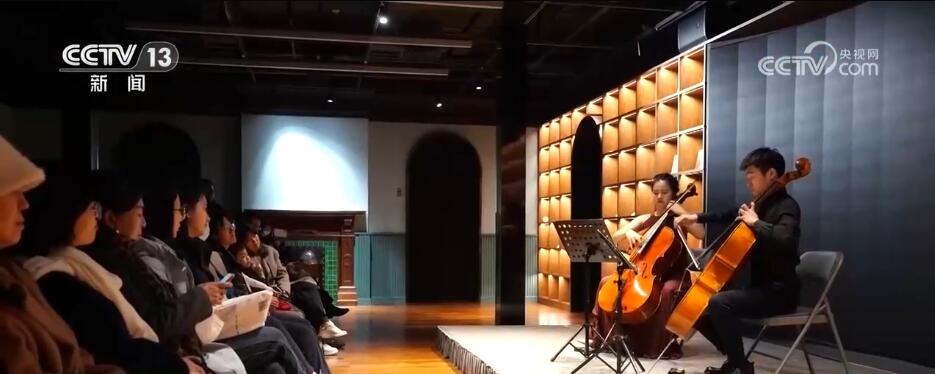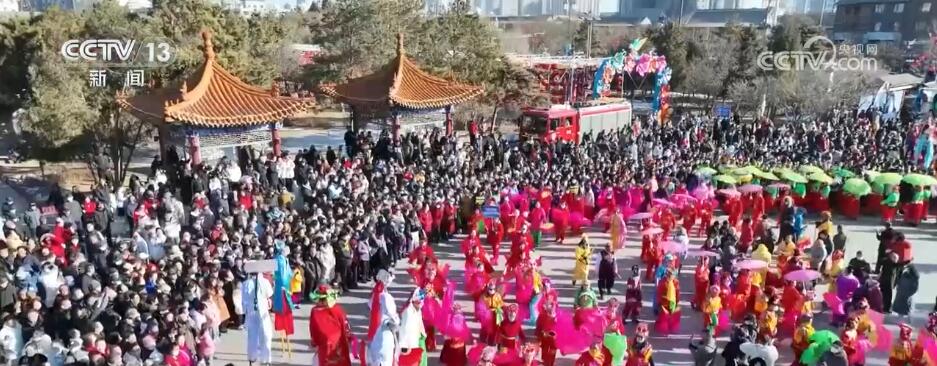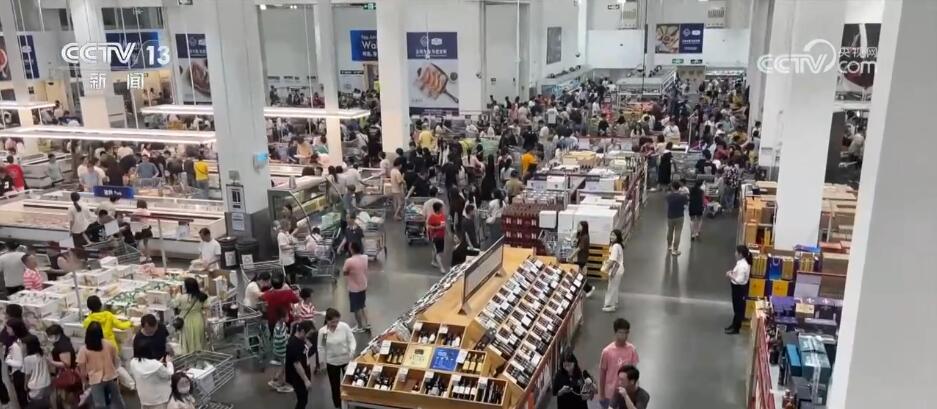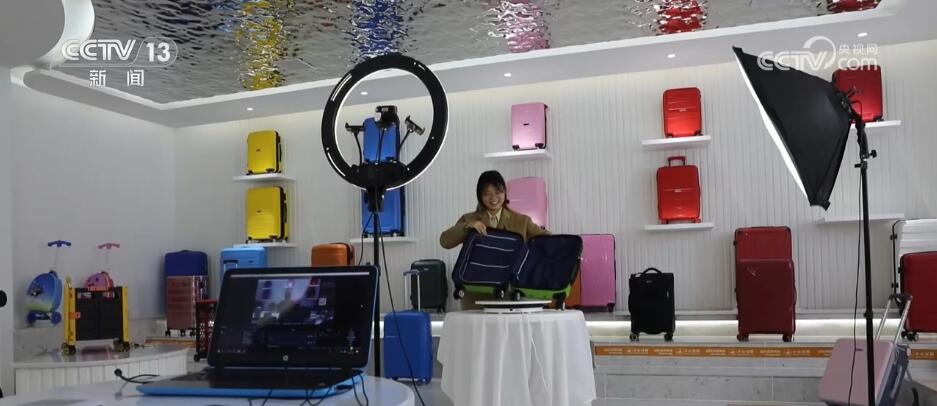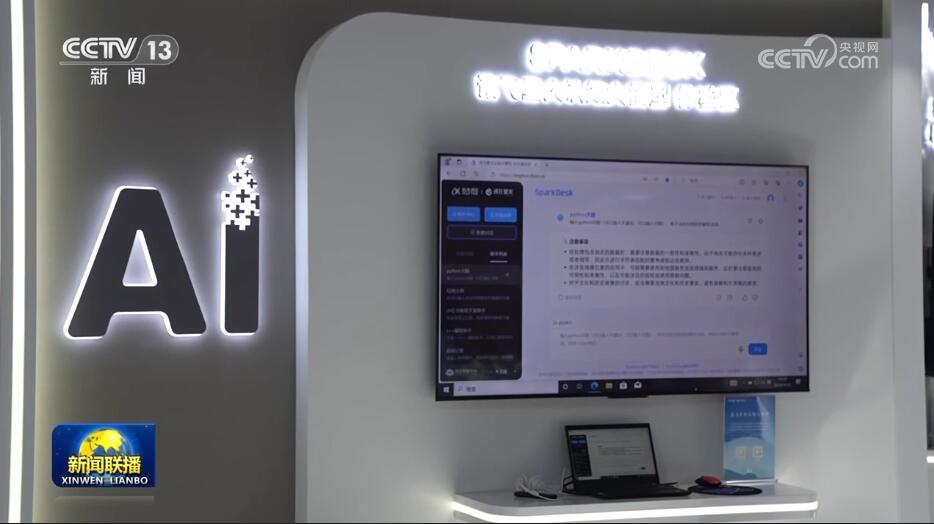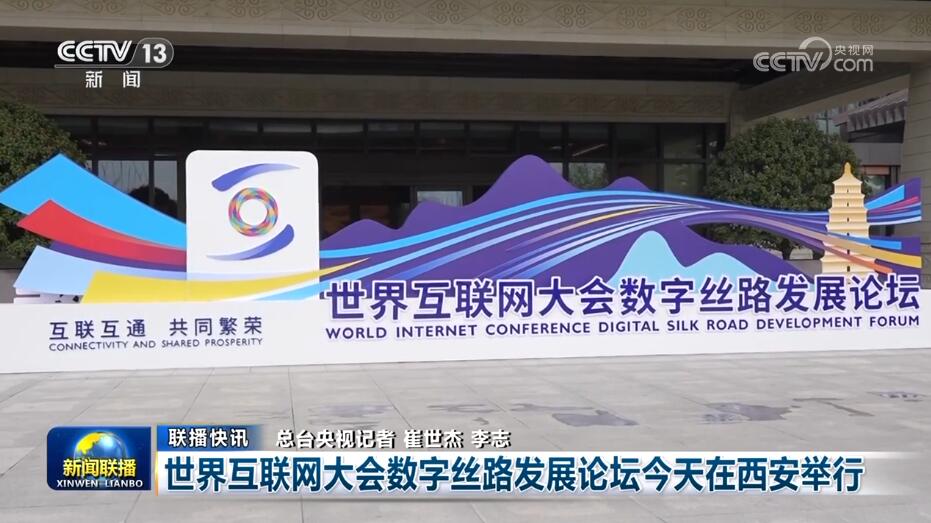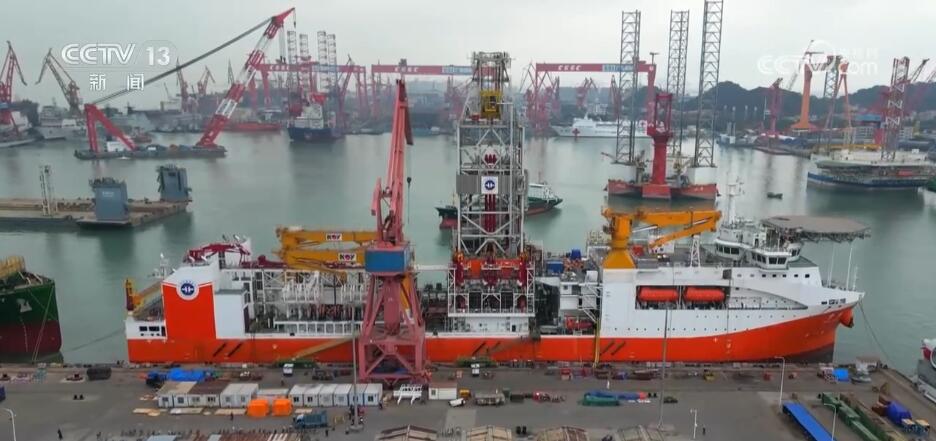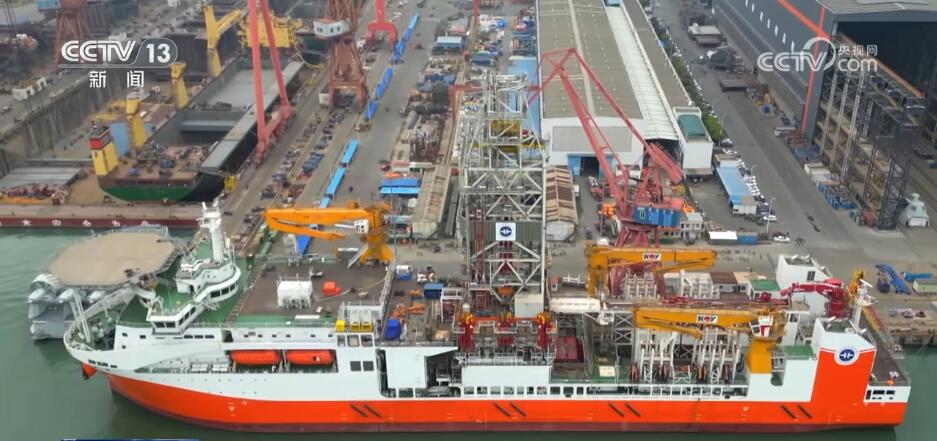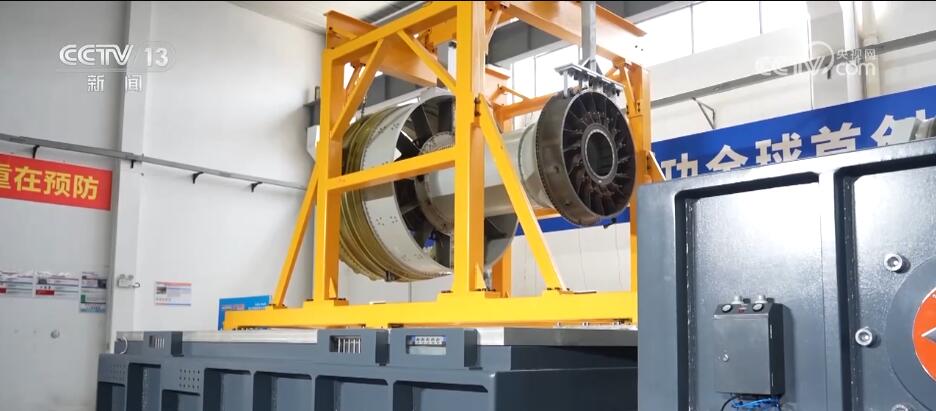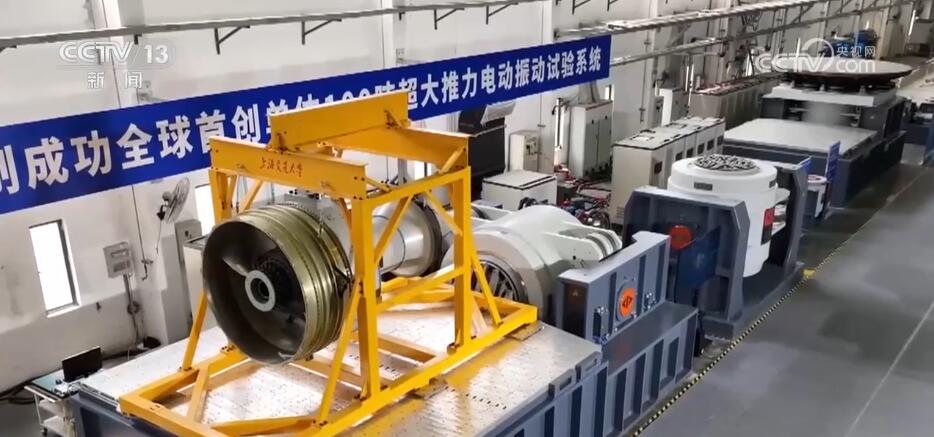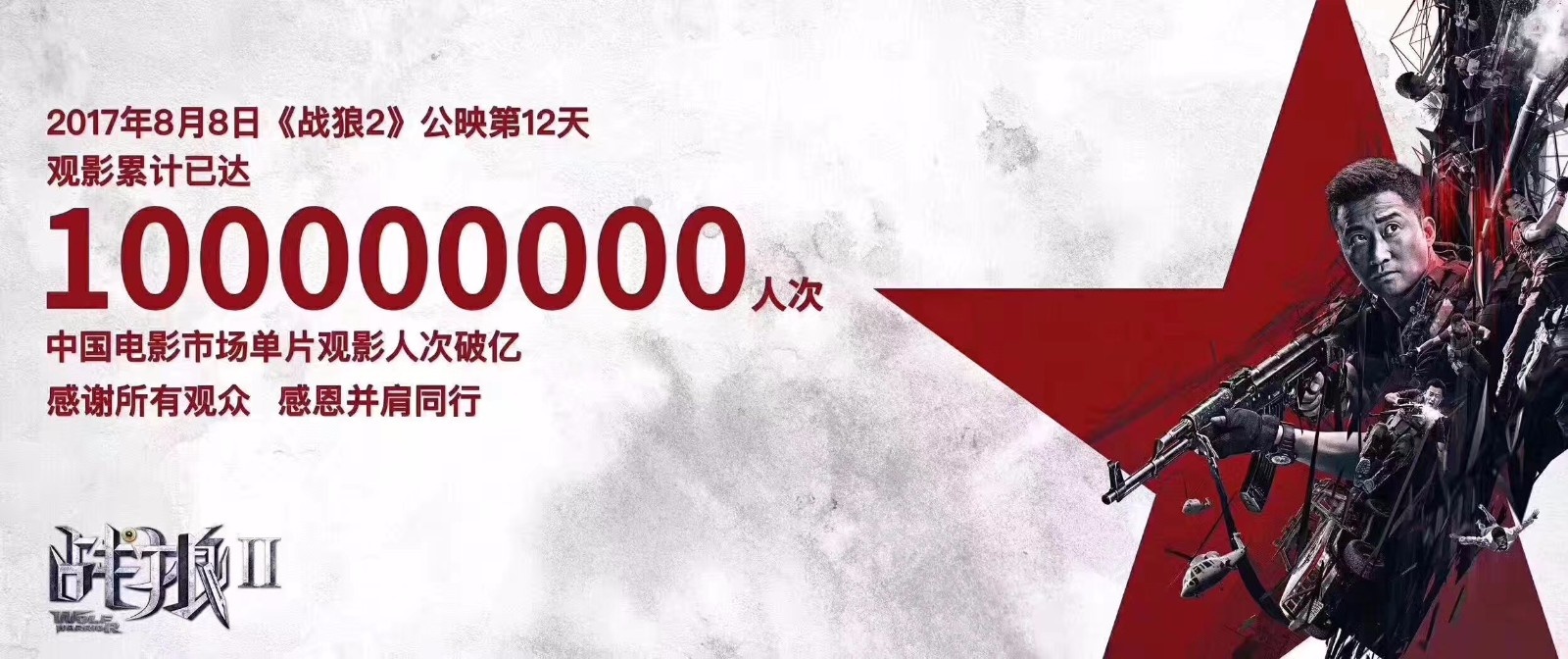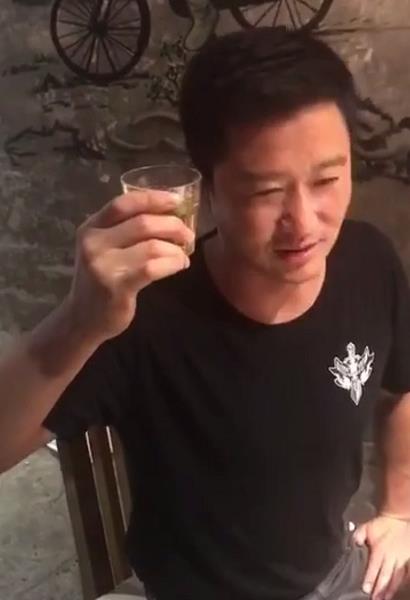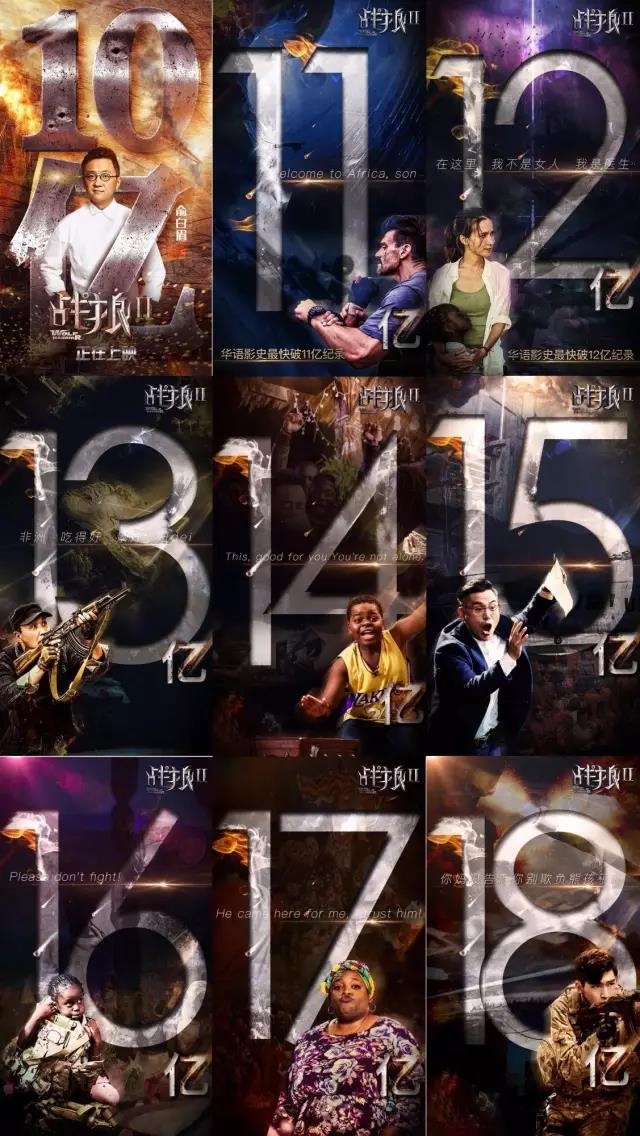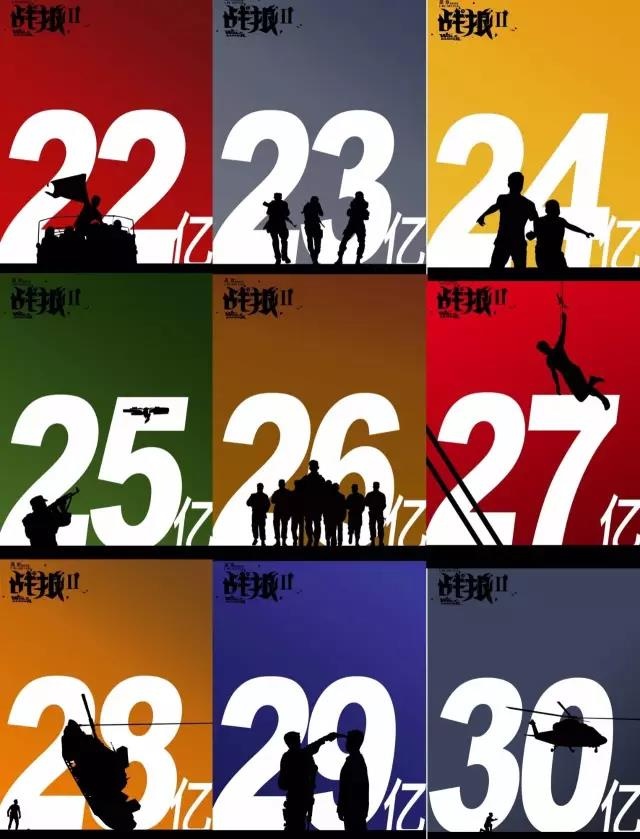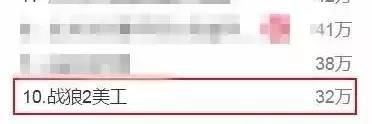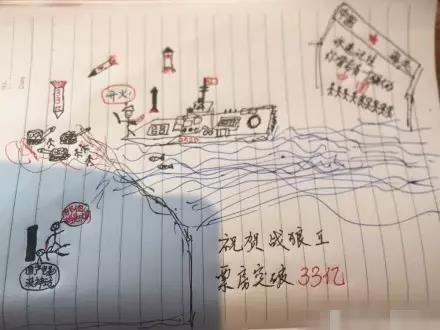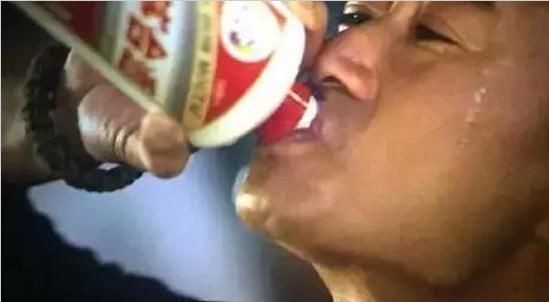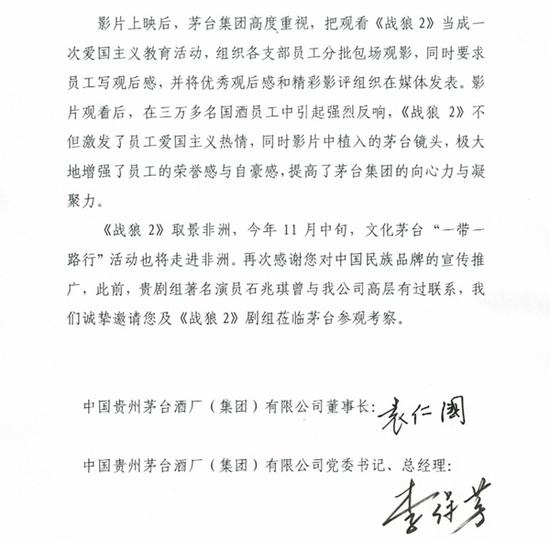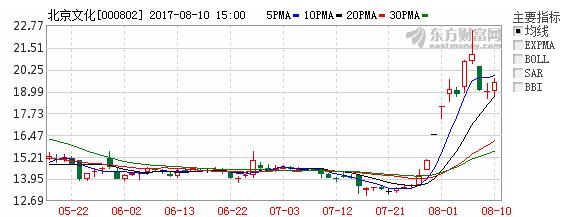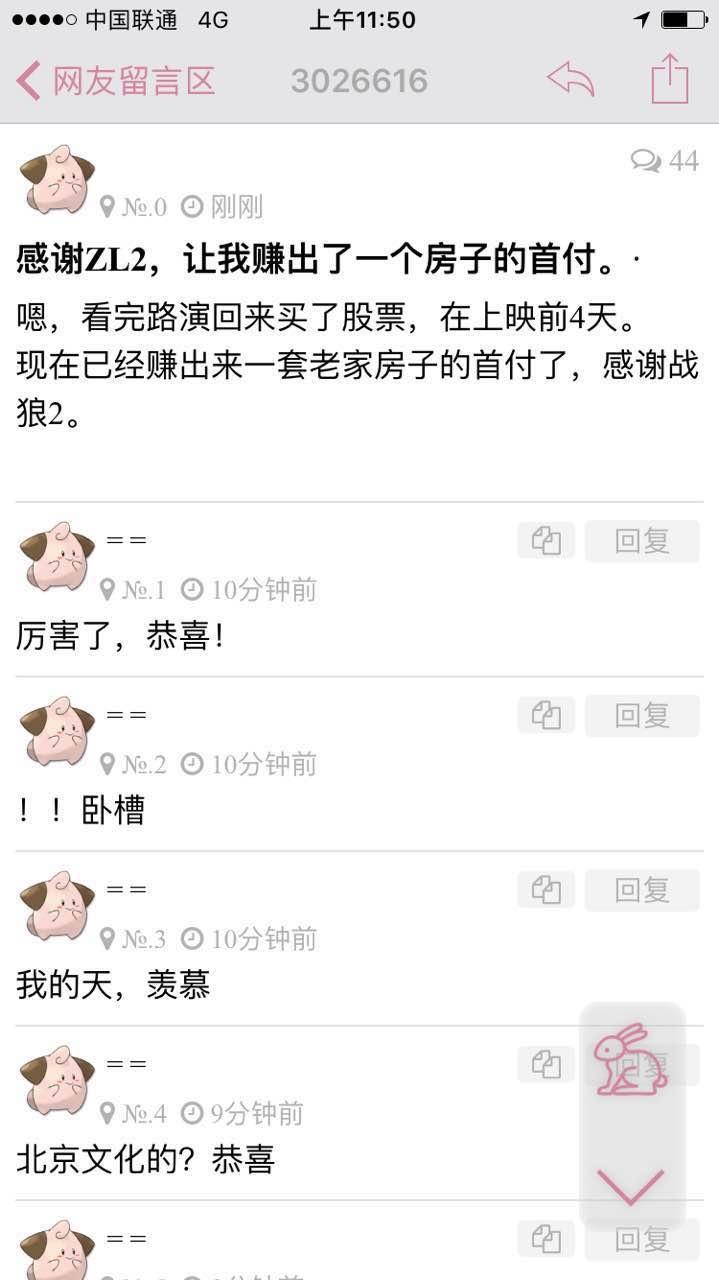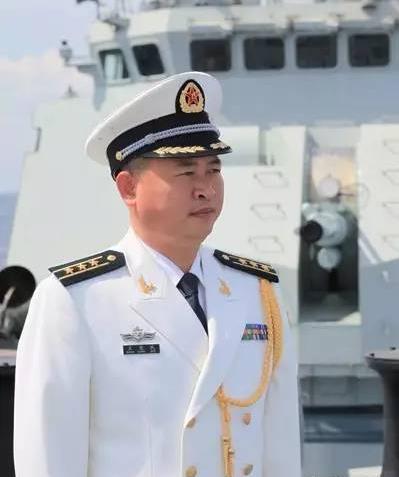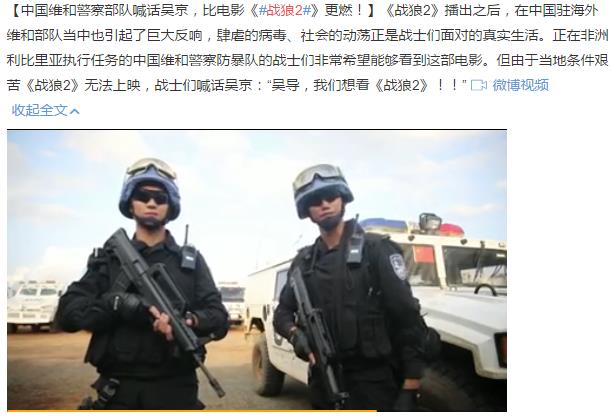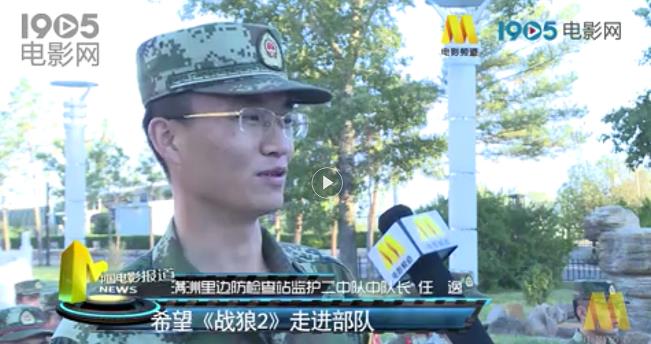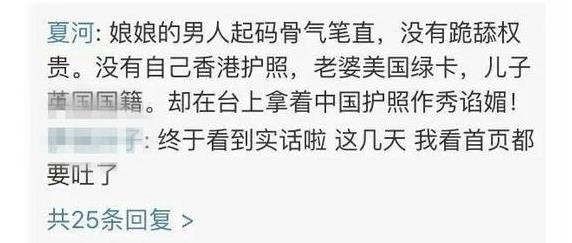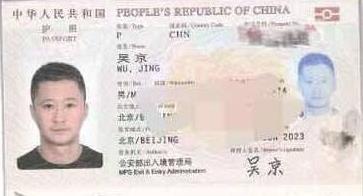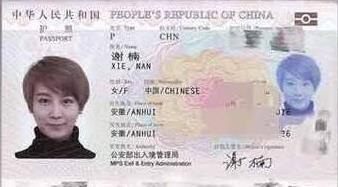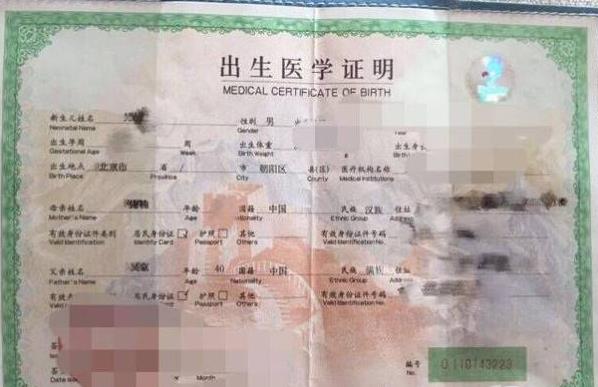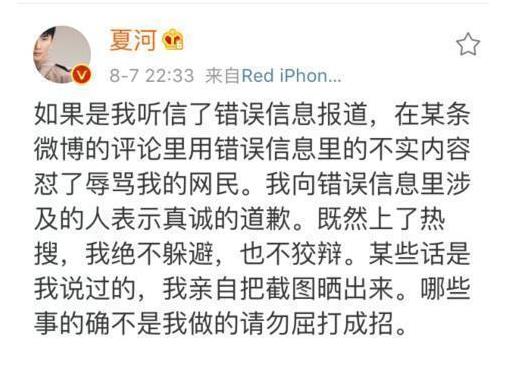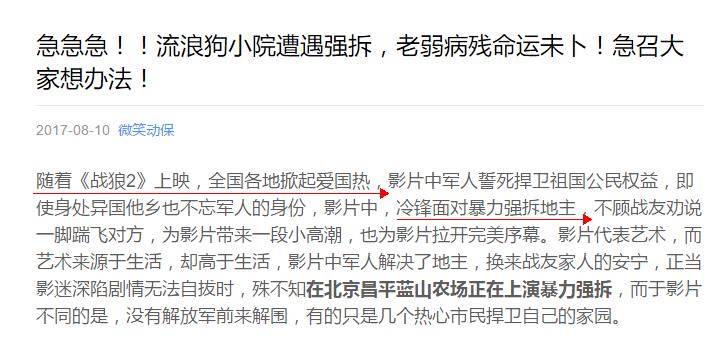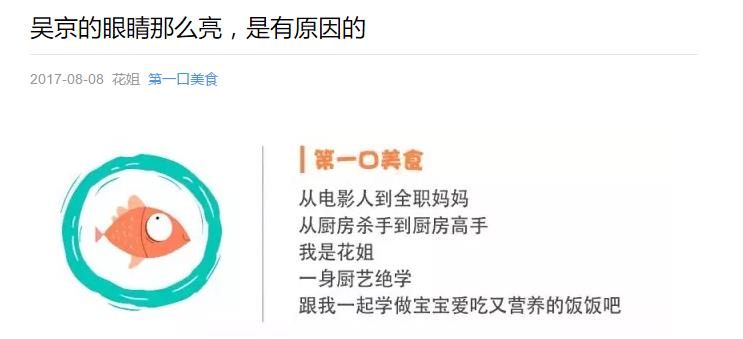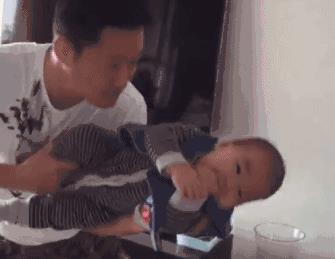Order of the General Administration of Customs of the People’s Republic of China
sequence 227 number
The Decision of the General Administration of Customs on Amending Some Rules was deliberated and adopted at the executive meeting of the General Administration of Customs on April 27, 2015. It is hereby promulgated and shall come into force as of the date of promulgation.
Director Yu Guangzhou
April 28, 2015
Decision of the General Administration of Customs on Amending Some Rules and Regulations
In order to promote the reform of the registered capital registration system according to law and further stimulate the creative vitality of the market, According to the requirements of the NPC Standing Committee’s Decision on Amending the Marine Environmental Protection Law of the People’s Republic of China and other seven laws (Presidential Decree No.8), the State Council’s Decision on Abolishing and Amending Some Administrative Regulations (the State Council Decree No.648) and the State Council’s Notice on Printing and Distributing the Reform Plan of Registered Capital Registration System (Guo Fa [2014] No.7), the General Administration of Customs decided to make a decision on the management of People’s Republic of China (PRC) Customs on bonded warehouses and goods stored therein.
I. The following amendments are made to the Provisions of People’s Republic of China (PRC) Customs on the Administration of Bonded Warehouse and Stored Goods (promulgated by Decree No.105th of the General Administration of Customs)
Delete Item (2) of Article 8 and the expression "registered capital" in Paragraph 1 of Article 19.
Two, the "People’s Republic of China (PRC) Customs on the domestic road transport of goods under customs supervision of transport enterprises and their vehicles and drivers management approach" (DecreeNo. 121st of the General Administration of Customs announced) are as follows.
Delete the expression "the registered capital is not less than 2 million yuan" in Item (1) of Article 5.
III. The Interim Measures of People’s Republic of China (PRC) Customs for the Administration of Bonded Logistics Centers (Type A) (promulgated by Decree No.129th of the General Administration of Customs) are as follows.
Delete Item (2) of Article 6, Item (8) of Article 8 and Item (3) of Paragraph 3 of Article 19.
Four, the "Interim Measures for the Administration of People’s Republic of China (PRC) Customs on Bonded Logistics Center (Type B)" (promulgated by DecreeNo. 130th of the General Administration of Customs) are as follows
Delete Item (2) of Article 5, Item (7) of Article 7, Item (2) of Article 11, Item (8) of Article 12 and Item (2) of Paragraph 3 of Article 21.
Five, the "measures for the administration of People’s Republic of China (PRC) Customs on export supervision warehouses and stored goods" (promulgated by DecreeNo. 133rd of the General Administration of Customs) are as follows.
Delete Item (3) of Article 9 and the expression of "registered capital" in Paragraph 1 of Article 20.
Six, the "measures for the administration of People’s Republic of China (PRC) customs supervision places" (DecreeNo. 171st of the General Administration of Customs) are as follows.
Delete Item (2) of Article 6.
This decision shall come into force as of the date of promulgation.
Provisions of People’s Republic of China (PRC) Customs on the Management of Bonded Warehouse and Goods Stored, Measures of People’s Republic of China (PRC) Customs on the Management of Domestic Road Transportation Enterprises Carrying Goods under Customs Supervision and Their Vehicles and Drivers, Interim Measures of People’s Republic of China (PRC) Customs on the Management of Bonded Logistics Center (Type A), Interim Measures of People’s Republic of China (PRC) Customs on the Management of Bonded Logistics Center (Type B), Measures of People’s Republic of China (PRC) Customs on the Management of Export Supervision Warehouse and Goods Stored, and Measures of People’s Republic of China (PRC) Customs on the Management of Places under Customs Supervision.
Annex: 1. People’s Republic of China (PRC) Customs’ regulations on bonded warehouses and goods stored.
2. Measures of People’s Republic of China (PRC) Customs on the administration of domestic road transport enterprises carrying goods under customs supervision, their vehicles and drivers.
3 People’s Republic of China (PRC) Customs Interim Measures for the Administration of Bonded Logistics Center (Type A)
4 People’s Republic of China (PRC) Customs Interim Measures for the Administration of Bonded Logistics Center (Type B)
5. Measures of People’s Republic of China (PRC) Customs for the Administration of Export Supervision Warehouse and Stored Goods.
Measures for the administration of People’s Republic of China (PRC) customs supervision places.
Annex 1
People’s Republic of China (PRC) Customs on Bonded Warehouse
And the provisions on the management of stored goods
Chapter I General Principles
the first These Provisions are formulated in accordance with the Customs Law of People’s Republic of China (PRC) and relevant national laws and administrative regulations in order to strengthen customs supervision over bonded warehouses and goods stored therein, standardize the operation and management of bonded warehouses, and promote foreign trade and economic development.
the second The term "bonded warehouse" as mentioned in these Provisions refers to a warehouse established with the approval of the customs to store bonded goods and other goods for which customs formalities have not been completed.
Article Bonded warehouses are divided into public bonded warehouses and self-use bonded warehouses according to different users.
The public bonded warehouse is operated by an independent enterprise legal person in China, which is mainly engaged in warehousing business, and specializes in providing bonded warehousing services to the society.
The self-use bonded warehouse is operated by a specific independent enterprise legal person in China, and only stores bonded goods for its own use.
Article 4 A special bonded warehouse is called a special bonded warehouse, which is specially used to store goods with specific purposes or special kinds.
Special bonded warehouses include liquid dangerous goods bonded warehouses, material preparation bonded warehouses, consignment maintenance bonded warehouses and other special bonded warehouses.
Bonded warehouse for liquid dangerous goods refers to a bonded warehouse that meets the national regulations on the storage of dangerous chemicals and provides bonded storage services for petroleum, refined oil or other bulk liquid dangerous chemicals.
The bonded warehouse for raw materials refers to the bonded warehouse where processing trade enterprises store raw materials, equipment and parts imported for processing re-export products, and the bonded goods stored are limited to the supply of the enterprises.
Consignment maintenance bonded warehouse refers to a bonded warehouse that specially stores the consignment spare parts imported for the maintenance of foreign products.
Article 5 The following goods may be stored in bonded warehouses with the approval of the customs:
(1) Processing imported goods;
(2) Transit goods;
(three) the supply of oil, materials and spare parts for maintenance of ships and aircraft in international navigation;
(4) Spare parts imported and consigned for the maintenance of foreign products;
(5) Temporary storage of goods by foreign investors;
(6) General trade goods that have not gone through customs formalities;
(seven) other goods approved by the customs without customs formalities.
Bonded warehouses shall carry out bonded warehousing business in accordance with the scope of goods and types of goods approved by the customs.
Article 6 Bonded warehouses shall not store goods prohibited from entering the country by the state, goods restricted from entering the country by the state that affect public safety, public health or health, public morality or order without approval, and other goods that shall not be stored in bonded warehouses.
Chapter II Establishment of Bonded Warehouse
Article 7 Bonded warehouses should be set up in areas with customs offices and convenient customs supervision.
Article 8 Enterprises operating bonded warehouses shall meet the following conditions:
(a) registered by the administrative department for industry and commerce, with the qualification of enterprise legal person;
(2) Having the ability to pay taxes to the customs;
(3) Having a business place dedicated to storing bonded goods;
(four) to store goods with special licenses, it shall hold the prescribed special licenses;
(five) processing trade enterprises operating bonded warehouses for raw materials, with an annual export value of at least 10 million US dollars;
(6) Other conditions stipulated by laws, administrative regulations and customs rules.
Article 9 A bonded warehouse shall meet the following conditions:
(1) Conforming to the requirements of the customs on the layout of bonded warehouses;
(2) Having safety isolation facilities, supervision facilities and other facilities necessary for handling business that meet the requirements of customs supervision;
(3) Having a computer management system for bonded warehouses that meets the requirements of customs supervision and networking with the customs;
(4) Having a bonded warehouse management system that meets the requirements of customs supervision and an accounting system that meets the requirements of the accounting law;
(five) in accordance with the national land management, planning, transportation, fire protection, safety, quality inspection, environmental protection and other laws, administrative regulations and relevant provisions;
(6) The minimum area of the public bonded warehouse is 2,000 square meters;
(7) The minimum volume of bonded warehouse for liquid dangerous goods is 5000 cubic meters;
(eight) the minimum area of bonded warehouse for consignment maintenance is 2000 square meters;
(9) Other conditions stipulated by laws, administrative regulations and customs rules.
Article 10 Bonded warehouses shall be examined and approved by the directly affiliated customs and reported to the General Administration of Customs for the record.
Article 11 Where an enterprise applies for the establishment of a bonded warehouse, it shall submit a written application to the competent customs where the warehouse is located, and prepare the relevant certification materials stipulated in Articles 8 and 9 of these Provisions.
If the application materials are complete and valid, the competent customs shall accept them. If the application materials are incomplete or do not conform to the statutory form, the competent customs shall inform the applicant of all the contents that need to be supplemented at one time within 5 working days. The competent customs shall, within 20 working days from the date of accepting the application, put forward preliminary examination opinions and submit relevant materials to the customs directly under the central government for examination and approval.
The customs directly under the central government shall complete the examination within 20 working days from the date of receiving the materials, and issue an approval document for those who meet the requirements, with the validity period of 1 year; If it does not meet the requirements, it shall inform the applicant in writing of the reasons.
Article 12 An enterprise applying for the establishment of a bonded warehouse shall apply to the customs for acceptance of the bonded warehouse within one year after the approval document of the bonded warehouse is issued by the customs, and the customs directly under it shall conduct examination and acceptance in accordance with the conditions stipulated in Articles 8 and 9 of these Provisions. If the applicant fails to apply for acceptance within the time limit without justifiable reasons or the bonded warehouse fails to pass the acceptance, the approval document of the bonded warehouse will automatically become invalid.
Article 13 After the bonded warehouse has passed the acceptance, it can be put into operation only after it has been registered by the customs and issued the Registration Certificate of People’s Republic of China (PRC) Customs Bonded Warehouse (hereinafter referred to as the Registration Certificate of Bonded Warehouse).
Chapter III Management of Bonded Warehouse
Article 14 Bonded warehouses shall not be subletted or lent to others for operation, and shall not have sub-warehouses.
Article 15 The customs implements computer networking management of bonded warehouses, and can send personnel into bonded warehouses at any time to check the receipt, payment and storage of goods and related account books. When the Customs deems it necessary, it may lock the bonded warehouse together with the bonded warehouse operation enterprises or directly send personnel to the warehouse for supervision, and the bonded warehouse operation enterprises shall provide the customs with office space and necessary office conditions.
Article 16 The customs shall implement classified management and annual examination system for bonded warehouses, and the specific measures shall be formulated separately by the General Administration of Customs.
Article 17 The person in charge of the bonded warehouse operation enterprise and the bonded warehouse management personnel shall be familiar with the relevant customs laws and regulations, abide by the customs supervision regulations and receive customs training.
Article 18 Bonded warehouse enterprises shall truthfully fill in relevant documents and warehouse account books, truly record and fully reflect their business activities and financial status, prepare monthly warehouse receipt, payment and storage statements and annual financial and accounting reports, and submit them to the competent customs regularly in computer electronic data and written form.
Article 19 Where a bonded warehouse operation enterprise needs to change its name, organizational form, legal representative and other matters, it shall submit a written report to the customs directly under the central government before the change, explaining the change matters, reasons and time; After the change, the customs shall re-examine it in accordance with the provisions of Article 8 of these Provisions.
Where a bonded warehouse needs to change its name, address, storage area (volume), the scope of goods stored and the types of goods, it shall be approved by the customs directly under it.
The customs directly under the central government shall report the changes of bonded warehouse enterprises and bonded warehouses to the General Administration of Customs for the record.
Article 20 If the bonded warehouse fails to operate the bonded warehousing business for six consecutive months without justifiable reasons, the bonded warehouse operating enterprise shall apply to the customs for terminating the bonded warehousing business. If the business enterprise fails to apply, the customs shall cancel its registration and withdraw the Registration Certificate of Bonded Warehouse.
If the bonded warehouse fails to participate in the annual review or fails to pass the annual review, the customs shall cancel its registration and withdraw the Registration Certificate of Bonded Warehouse.
Where the bonded warehouse terminates its bonded warehousing business for other reasons, the bonded warehouse management enterprise shall submit a written application, return the Registration Certificate of Bonded Warehouse after customs examination, and go through the cancellation procedures.
Chapter IV Management of Goods Stored in Bonded Warehouse
Article 21 When the goods in bonded warehouses are put into storage, the consignee or consignor’s agent shall go through the formalities of customs declaration and storage with the relevant documents, and the customs shall review the variety, quantity and amount of the goods declared and stored in the bonded warehouses according to the approved scope of goods stored in the bonded warehouses and the types of goods, and register the goods in storage.
If the entry port of the warehousing goods is not in the bonded warehouse, the relevant formalities shall be handled with the approval of the customs in accordance with the provisions of customs transit or at the port customs.
Article 22 Bonded warehouse goods can be packaged, classified, marked, disassembled, assembled and other simple processing, and no substantive processing is allowed.
Goods in bonded warehouses shall not be sold, transferred, mortgaged, pledged, retained, used for other purposes or otherwise disposed of without customs approval.
Article 23 The following bonded warehousing goods shall be exempted from customs duties and import taxes when they leave the warehouse according to law:
(1) Parts and components used for free maintenance of foreign products within the warranty period and conforming to the relevant provisions on compensation for goods without cost;
(2) Oils and materials used in ships and aircraft engaged in international navigation;
(3) Other goods exempted from tax as stipulated by the state.
Article 24 The storage period of bonded warehouse goods is 1 year. If there are justified reasons, it may be extended with the consent of the customs; Except in special circumstances, the extension shall not exceed one year.
Article 25 The bonded warehouse goods under the following circumstances may go through the formalities of leaving the warehouse with the approval of the customs, and the customs shall manage and release them according to the corresponding regulations:
(a) shipped abroad;
(2) Shipped to the bonded area or export processing zone in China or transferred to other bonded warehouses to continue bonded supervision;
(three) to import processing trade;
(4) Transferred to the domestic market for sale;
(5) Other circumstances stipulated by the customs.
Article 26 Where the goods in bonded warehouses are shipped to other places in China, the consignee or consignor’s agent shall fill in the import declaration form and declare it to the customs with the relevant documents such as the outbound documents. The bonded warehouse shall go through the outbound formalities with the customs and ship the goods with the customs declaration form signed and released by the customs.
Where goods from bonded warehouses are taken out of the warehouse from different places, they can be declared by the competent customs in the bonded warehouse, or they can go through customs formalities in accordance with customs regulations.
If the goods leaving the bonded warehouse are in small batches and frequent batches, they can go through centralized customs declaration procedures with the approval of the customs.
Article 27 If the goods in bonded warehouses are transported overseas after leaving the warehouse, the consignor or his agent shall fill out the export declaration form and declare it to the customs with the relevant documents such as the outbound documents. The bonded warehouse shall go through the outbound formalities with the customs and ship the goods with the customs declaration form signed and released by the customs.
If the exit port of outbound goods is not in charge of the customs in the bonded warehouse, the relevant formalities may be handled at the port customs with the approval of the customs, or the customs formalities may be handled in accordance with the customs regulations.
Chapter V Legal Liability
Article 28 If the goods in bonded warehouse are damaged or lost during storage, the bonded warehouse shall pay the customs the tax on the damaged or lost goods according to law and bear corresponding legal responsibilities, except for force majeure.
Article 29 If the bonded warehouse goods are stored in the bonded warehouse for an extended period, and they are neither transported out of the country nor imported after the extended period expires, the customs shall handle them in accordance with the provisions of Article 5 of the Measures of People’s Republic of China (PRC) Customs on the Treatment of Imported Goods with Overdue Customs Declaration, Incoming Goods Unloaded by mistake or Overdischarged and Abandoned Imported Goods.
Article 30 After the establishment, alteration and cancellation of the bonded warehouse, if the customs finds that the original application materials are incomplete or inaccurate, it shall order the operating enterprise to make corrections within a time limit, and if it finds that the enterprise has concealed the real situation, provided false information and other illegal circumstances, it shall be punished according to law.
Article 31 If a bonded warehouse enterprise commits any of the following acts, the customs shall order it to make corrections, and may give a warning or impose a fine of less than 10,000 yuan; If there is illegal income, a fine of less than 3 times the illegal income shall be imposed, but the maximum amount shall not exceed 30,000 yuan:
(1) storing non-bonded goods in bonded warehouses without customs approval;
(2) setting up a bonded warehouse branch without permission;
(three) the management of bonded goods is chaotic and the accounts are unclear;
(four) the business matters have changed, and the customs formalities have not been handled in accordance with the provisions of article nineteenth.
Article 32 Other illegal acts in violation of these provisions shall be punished by the Customs in accordance with the Customs Law of People’s Republic of China (PRC) and the Regulations on the Implementation of Administrative Punishment of People’s Republic of China (PRC) Customs. If a crime is constituted, criminal responsibility shall be investigated according to law.
Chapter VI Supplementary Provisions
Article 33 The General Administration of Customs shall be responsible for the interpretation of these Provisions.
Article 34 These Provisions shall come into force as of February 1, 2004. The Measures of People’s Republic of China (PRC) Customs for the Administration of Bonded Warehouse and Stored Goods, which came into effect on May 1, 1988, shall be abolished at the same time.
Annex 2
People’s Republic of China (PRC) Customs on Customs Supervision of Domestic Road Transportation
Measures for the administration of freight transport enterprises and their vehicle drivers
Chapter I General Principles
the first In order to strengthen the management of domestic transport enterprises and their vehicles and drivers who carry goods under customs supervision, these Measures are formulated in accordance with the Customs Law of People’s Republic of China (PRC) (hereinafter referred to as the Customs Law) and other relevant laws and regulations.
the second The domestic transport enterprises, vehicles and drivers referred to in these Measures refer to enterprises, vehicles and drivers registered by the customs or registered for the record in accordance with these Measures and engaged in the transportation of goods under customs supervision in China.
Article Transport enterprises and vehicles shall apply to the customs directly under the customs area where the enterprises are located for registration, and the drivers shall go through the registration formalities.
Article 4 The customs shall implement computer networking management on the registration materials of transport enterprises and vehicles and the registration materials of drivers. If the data are shared, it will not go through the formalities of filing in different places.
Chapter II Registration
Article 5 A transport enterprise that carries goods under customs supervision shall meet the following qualifications:
(a) engaged in cargo transportation business for more than 1 year;
(2) In accordance with the provisions of Articles 67 and 68 of the Customs Law, there are guarantees provided by legal persons, other organizations or citizens who have the ability to perform customs affairs guarantees;
(3) The enterprise’s financial system and account book management conform to the relevant provisions of the state;
(4) The enterprise has a good credit standing and has no criminal record in the transportation business.
Article 6 Transport enterprises shall submit the following documents to the customs when handling registration:
(1) Application Form for Registration of Domestic Transportation Enterprises Carrying Goods under Customs Supervision (see Annex 1);
(2) A copy of the Business License issued by the administrative department for industry and commerce;
(three) a copy of the "road transport business license" issued by the transportation management department;
(4) A copy of the Organization Code Certificate of People’s Republic of China (PRC) issued by the technical supervision department (hereinafter referred to as the Organization Code Certificate);
(five) the list of drivers of vehicles carrying goods under customs supervision and their registration materials; If an enterprise changes its driver, it shall go through the formalities for filing the driver’s change with the customs in time.
When submitting the documents in items (2), (3) and (4) of this article, the originals shall also be presented for customs examination.
Article 7 The customs shall examine the qualifications of the transport enterprises and the relevant documents submitted, and issue the Registration Certificate for Domestic Road Transport Enterprises Carrying Goods under Customs Supervision if they are qualified (see Annex 4, hereinafter referred to as the Registration Certificate).
Article 8 Vehicles carrying goods under customs supervision shall be vans or container tractors, and may also be bulk trucks with customs approval. The above vehicles shall meet the following conditions:
(1) Vehicles used to transport goods under customs supervision must be owned by the transport enterprise, and the name of the owner of the Motor Vehicle Driving License must be consistent with the name of the transport enterprise to which it belongs.
(2) The body of a van must be integrated with the frame. The body must be made of metal, with no hidden compartment and partition, and it has sealing conditions. The screws connected to the car must be welded, and the two doors of the car must be clamped with steel plates to ensure that they cannot be opened after sealing.
If there is a special need to open a side door, it must be approved by the customs and meet the requirements of customs supervision.
(three) container tractors must carry containers that meet international standards.
(four) bulk trucks can only carry bulk goods that do not have the sealing conditions, such as ore, grain and super-large machinery and equipment.
(five) vehicles engaged in the transportation of special goods shall submit the approval certificate of the competent department.
Article 9 When handling vehicle registration, the following documents shall be submitted to the customs:
(1) Application Form for Registration of Vehicles Carrying Goods under Customs Supervision in China (see Annex 2);
(two) a copy of the "motor vehicle driving license" issued by the public security traffic management department;
(three) vehicles carrying dangerous goods shall submit a copy of the "inflammable and explosive chemicals transport permit" issued by the public security fire department;
(4) 2 color photos of the vehicle (requirements: the left side of the front is 45, 4×3 inches; Can clearly display the license plate number; The name of the enterprise is sprayed on the side of the front and carriage).
When submitting the documents in items (2) and (3) of this article, the originals shall also be presented for customs examination.
Article 10 The customs shall review the vehicle supervision conditions and relevant documents, and if they are qualified, they shall issue the Vehicle Loading Permit for vehicles carrying goods under customs supervision in People’s Republic of China (PRC) (see Annex 5, hereinafter referred to as the Vehicle Loading Permit) and the Vehicle Loading Register for vehicles carrying goods under customs supervision in People’s Republic of China (PRC) Customs (see Annex 6, hereinafter referred to as the Vehicle Loading Register).
Article 11 Drivers who carry goods under customs supervision shall meet the following conditions:
(1) Possessing a resident identity card of the People’s Republic of China;
(2) Being employees of transportation enterprises;
(3) Having no criminal record;
(4) Abide by the relevant customs regulations.
Article 12 The driver shall submit the following documents to the customs when filing and registering:
(1) Registration Form for Drivers of Vehicles Carrying Goods under Customs Supervision in China (see Annex 3);
(two) the driver’s domestic identity card, "motor vehicle driver’s license" (copy);
(3) Two recent color photos of the driver (size: 1 inch, bareheaded, with red background).
When submitting the documents in item (2) of this article, the original documents shall also be presented for customs examination.
Article 13 Drivers who carry goods under customs supervision should know and be familiar with relevant customs laws and regulations and participate in various business trainings organized by the customs.
Article 14 If the registration certificate, car cargo register, quasi-loading certificate and other relevant documents need to be updated, they can apply to the customs at the place of registration for a new certificate and book with the original ones; If the above-mentioned certificates and books are damaged, lost or stolen, they will be reissued if they are verified by the customs at the place of registration.
Article 15 The annual inspection of transport enterprises and vehicles shall be completed before the end of May each year, and the customs shall conduct annual inspection according to the qualifications specified above.
Article 16 Transport enterprises, vehicles and drivers who are no longer engaged in the cargo transport business under customs supervision shall return the Registration Certificate, Vehicle Cargo Register, Quasi-Loading Certificate and other relevant documents to the customs at the place of registration, and go through the formalities.
Article 17 Vehicle replacement (including vehicle replacement, engine replacement, vehicle license plate number replacement), modified car body, etc., should be re-registered in accordance with the provisions of these measures.
Chapter III Customs Supervision
Article 18 When the driver is engaged in the transportation of goods under customs supervision, he should show the relevant documents such as the Permit for Loading and truthfully fill in and submit the Vehicle Cargo Register. After the goods arrive at the destination, they must go through the verification procedures of the Vehicle Cargo Register at the destination customs.
Article 19 The driver shall deliver the goods under customs supervision to the designated supervision place in a complete and timely manner, and ensure that the customs seal is intact, and shall not open it without customs permission.
Article 20 "Car Cargo Register" and "quasi-loading certificate" are used by vehicles.
Article 21 For vehicles that implement satellite positioning management, the identity card (IC) card used by the satellite positioning management system has the same effect as the Vehicle Cargo Register.
Article 22 Transport enterprises and drivers shall properly keep the relevant certificates and books issued by the customs, and shall not lend, alter or intentionally damage them.
Article 23 Vehicles carrying goods under customs supervision should follow the routes and requirements specified by the customs and arrive at the destination customs within the time limit specified by the customs. No unauthorized change of route, stopover and loading and unloading of goods.
Article 24 In case of special circumstances, when the vehicle breaks down in transit and needs to be replaced by other means of transport, it shall immediately notify the nearby customs and replace it under the supervision of the customs. The nearby customs shall be responsible for promptly notifying the customs of the place of departure and destination of the goods.
Article 25 If the goods under customs supervision are lost, short or damaged in transit, the transport enterprise shall bear the corresponding tax obligations and other legal responsibilities except for force majeure.
Chapter IV Legal Liability
Article 26 Transport enterprises and drivers who violate smuggling regulations shall be punished by the customs according to the relevant provisions of the Customs Law of People’s Republic of China (PRC) and the Regulations on the Implementation of Administrative Punishment of People’s Republic of China (PRC) Customs. If a crime is constituted, criminal responsibility shall be investigated according to law.
Article 27 Transport enterprises and drivers, in any of the following circumstances, shall be ordered by the customs to make corrections and may be given a warning:
(1) Vehicles carrying goods under customs supervision do not follow the route or scope designated by the customs.
(2) When a vehicle carrying goods under customs supervision arrives at or leaves the place where the customs is established, it fails to truthfully report and submit the Vehicle Cargo Register to the customs or go through the verification procedures.
(3) When the vehicle carrying the goods under customs supervision breaks down in transit, and it is impossible to continue driving, and it is necessary to change into other means of transport, the driver or his subordinate enterprise fails to report the situation to the nearby customs or the competent customs of goods without justifiable reasons.
(4) Failing to accept the inspection of the vehicle and its cargo by the customs in accordance with the provisions.
(5) Losing, damaging, altering or lending the relevant documents such as the Cargo Register and the Permit for Loading issued by the customs, which hinders the customs supervision or affects the handling of relevant customs procedures.
(6) Changing vehicles (vehicle engine, license plate number) and drivers without customs permission; Modifying carriages and car bodies.
(seven) the transport enterprise sells its name for others to carry goods under customs supervision.
Article 28 Transport enterprises and drivers, in any of the following circumstances, may be given a warning and suspended from engaging in relevant business or practice within 6 months:
(1) Smuggling;
(2) Having committed three or more major violations of customs supervision regulations within one year;
(3) The goods under customs supervision have been damaged or lost for many times due to poor management;
(four) without the permission of the customs, opening or damaging the seals imposed by the customs on vehicles;
(5) unpacking, exchanging, refitting, detaining, transferring, changing signs, using for other purposes or otherwise handling the goods under customs supervision;
(six) there are other circumstances that need to suspend the relevant business or practice.
Article 29 In any of the following circumstances, the customs may revoke the registration of transport enterprises and drivers or stop them from engaging in related business:
(1) It constitutes a crime of smuggling and is dealt with by judicial organs according to law;
(two) there are more than two smuggling acts in one year;
(three) lax management, more than three times in one year by the customs to suspend the practice, cancel the qualification;
(4) Having been suspended from engaging in relevant business or practice by the Customs due to violation of regulations, resumed engaging in relevant business or suspended from engaging in relevant business or practice in violation of the provisions of these Measures again within one year after practicing;
(five) other circumstances that need to cancel its registration or stop engaging in relevant business.
Article 30 For transport enterprises and vehicles that fail to go through the annual examination or fail to pass the annual examination within the time limit, the customs shall suspend the procedures for carrying goods under customs supervision; If it has not been examined for three months after the deadline, the customs will automatically give up its qualification to carry goods under customs supervision, cancel it and recover the relevant documents.
Article 31 If the business license of a transport enterprise is revoked by the administrative department for industry and commerce or the qualification of road freight transport is cancelled by the transportation management department, the customs shall cancel its qualification of carrying goods under customs supervision.
Chapter V Supplementary Provisions
Article 32 Production enterprises own vehicles and their drivers, which need to carry goods under customs supervision of the enterprise, shall be managed in accordance with these measures.
Article 33 Domestic transport enterprises, their vehicles and drivers who transport transit goods by road in China shall be managed according to these measures.
Article 34 The General Administration of Customs shall be responsible for the interpretation of these Measures.
Article 35 These Measures shall be implemented as of January 1, 2005. The original Measures of People’s Republic of China (PRC) Customs on the Administration of Domestic Automobile Transportation Enterprises and Their Vehicles Carrying Goods under Customs Supervision in Guangdong (No.19 [2001] of the Department of Supervision) and the Measures of People’s Republic of China (PRC) Customs on the Administration of Domestic Cars Carrying Goods under Customs Supervision (No.950 [89] of the Department of Goods), The Reply of the General Administration of Customs of the People’s Republic of China on the Scope of Application of the Administrative Measures of People’s Republic of China (PRC) Customs on Domestic Vehicles Carrying Goods under Customs Supervision (No.958 [1990] of the Department of Supervision) and the Notice on Forwarding the Minutes of the Work Conference on the Management of the Diversion of Freight Cars between Hong Kong and Macao (No.345 [90] of the Department of Supervision) shall be abolished at the same time.
Attachment: 1. Application Form for Registration of Domestic Transportation Enterprises Carrying Goods under Customs Supervision
2. Application form for registration of domestic transport vehicles carrying goods under customs supervision
3. Registration form for drivers of domestic transport vehicles carrying goods under customs supervision
4 domestic road transport enterprises carrying goods under customs supervision registration certificate
5. Vehicle Permit for Vehicles Carrying Goods under Customs Supervision in People’s Republic of China (PRC)
6. People’s Republic of China (PRC) Customs Vehicle Loading Register for Goods under Customs Supervision.
(The above attachment is omitted, please visit the website of the General Administration of Customs for details.)
Annex 3
People’s Republic of China (PRC) Customs Dui Bonded Logistics Center
(A) Interim Measures for the Administration
Chapter I General Principles
the first In order to adapt to the development of modern international logistics, standardize the customs’ management of bonded logistics centers (Type A) and their import and export goods, and the business behavior of bonded warehousing logistics enterprises, these measures are formulated in accordance with the Customs Law of People’s Republic of China (PRC) and relevant national laws and administrative regulations.
the second The bonded logistics center (Type A) as mentioned in these Measures (hereinafter referred to as the logistics center) refers to the customs supervision place which is approved by the customs and operated by an enterprise as a legal person in China and specializes in bonded warehousing and logistics business.
Article Logistics centers are divided into public logistics centers and self-use logistics centers according to the scope of services.
Public logistics center refers to a place under customs supervision, which is operated by an enterprise legal person in China specializing in warehousing and logistics business and provides bonded warehousing and logistics comprehensive services to the society.
Self-use logistics center refers to a place under customs supervision operated by an enterprise as a legal person in China, which only provides bonded warehousing and logistics services to the enterprise or the internal members of the enterprise group.
Article 4 The following goods can be stored in the logistics center with the approval of the customs:
(1) Domestic export goods;
(2) Transit goods and international transit goods;
(3) Temporary storage of goods by foreign investors;
(four) processing trade import and export goods;
(five) the supply of materials and spare parts for international navigation ships and aircraft;
(6) Spare parts imported and consigned for the maintenance of foreign products;
(7) General trade imported goods that have not gone through customs formalities;
(eight) other goods approved by the customs without customs formalities.
An enterprise operating a logistics center shall carry out bonded warehousing logistics business in accordance with the scope of goods stored and the types of goods approved by the customs.
Chapter II Establishment of Logistics Center
Article 5 The logistics center should be located in a place where there is a large demand for international logistics, convenient transportation and convenient customs supervision.
Article 6 A logistics center operating enterprise shall meet the following qualifications:
(1) Having been registered by the administrative department for industry and commerce and having an independent enterprise legal person qualification.
(2) Having the ability to pay taxes to the customs and perform other legal obligations.
(3) Having a business place specially for storing goods, and having the land use right of the business place. Lease other people’s land and places for business, the lease term shall not be less than 3 years.
(4) Those who engage in the storage of goods with special licenses shall hold the prescribed approval documents for special business licenses.
(five) enterprises operating self-use logistics centers, the annual import and export amount (including deep processing carry-over) is not less than 200 million US dollars in the eastern region and not less than 50 million US dollars in the central and western regions.
(6) Having a management system that meets the requirements of customs supervision and an accounting system that meets the requirements of the accounting law.
Article 7 An enterprise operating a logistics center shall meet the following conditions when applying for the establishment of a logistics center:
(1) Conforming to the requirements of the customs for the supervision, planning and construction of the logistics center;
(two) the storage area of public logistics center, not less than 20000 square meters in the eastern region, not less than 5000 square meters in the central and western regions;
(3) The storage area of the self-use logistics center (including the storage yard) shall not be less than 4,000 square meters in the eastern region and not less than 2,000 square meters in the central and western regions;
(4) establishing a computer management system that meets the requirements of customs supervision, providing terminal equipment for customs to access data, and networking with the customs through the "electronic port" platform in accordance with the authentication methods and data standards stipulated by the customs, so that the customs can exchange data and share information with the departments of national taxation and foreign exchange management on a unified platform;
(5) Setting up supervision and office facilities such as safety isolation facilities and video surveillance systems that meet the requirements of customs supervision;
(six) in line with the national land management, planning, fire protection, safety, quality inspection, environmental protection and other aspects of the laws, administrative regulations, rules and relevant provisions.
Article 8 An enterprise applying for the establishment of a logistics center shall submit a written application to the customs directly under it, and submit the following materials stamped with the seal of the enterprise:
(a) the application form (see Annex 1);
(two) the municipal (city divided into districts) people’s government opinion (with the feasibility study report);
(3) A copy of the articles of association of the enterprise;
(4) A photocopy of the business license of the enterprise as a legal person;
(5) A copy of the identity certificate of the legal representative;
(six) a copy of the tax registration certificate;
(seven) a copy of the bank certificate;
(eight) the internal management system of the logistics center;
(nine) the documents that the site selection conforms to the overall land use planning, and the geographical location map and floor plan;
(ten) a copy of the customs declaration registration certificate of the customs declaration unit.
Article 9 The application for the establishment of a logistics center shall be accepted by the directly affiliated customs and submitted to the General Administration of Customs for examination and approval.
Article 10 The enterprise shall apply for acceptance to the directly affiliated customs within one year from the date when the General Administration of Customs issues the document approving the establishment of the logistics center, and the directly affiliated customs shall, jointly with the provincial departments of taxation and foreign exchange administration, conduct examination and acceptance in accordance with the provisions of these Measures.
After the logistics center passes the inspection, the General Administration of Customs will issue the Bonded Logistics Center (Type A) Acceptance Certificate (see Annex 2 for the style) and the Bonded Logistics Center (Type A) Registration Certificate (see Annex 3 for the style) to the enterprise, and issue the Bonded Logistics Center (Type A) sign (see Annex 4 for the style).
The logistics center can carry out relevant business after passing the acceptance.
Article 11 If an enterprise that has been allowed to set up a logistics center fails to apply for acceptance on time for justified reasons, it may postpone the acceptance with the consent of the customs directly under it, but the extension shall not exceed 6 months. If there are special circumstances that require a second extension, it shall be reported to the General Administration of Customs for approval.
If an enterprise approved to set up a logistics center fails to apply for acceptance within the time limit without justifiable reasons or fails to pass the acceptance, it shall be deemed as withdrawing its application for setting up a logistics center.
Chapter III Operation and Management of Logistics Center
Article 12 The logistics center shall not be leased or lent to others for operation, and shall not have sub-centers.
Article 13 Logistics center operating enterprises can carry out the following business:
(1) Bonded storage of import and export goods and other goods for which customs formalities have not been completed;
(two) to carry out simple processing and value-added services for the stored goods;
(3) Global procurement and international distribution and distribution;
(4) entrepot trade and international transit business;
(five) other international logistics business approved by the customs.
Article 14 Logistics center operating enterprises shall not carry out the following business in the logistics center:
(1) Commercial retail;
(2) Production, processing and manufacturing;
(3) Maintenance, renovation and disassembly;
(4) storing goods whose import and export are prohibited by the state, and goods whose import and export are restricted by the state that endanger public safety, public health or health, public morality or order;
(5) Goods that are clearly stipulated by laws and administrative regulations that cannot enjoy the bonded policy;
(six) other business unrelated to the logistics center.
Article 15 The person in charge of the logistics center and its staff shall be familiar with the relevant customs laws and administrative regulations and abide by the customs supervision regulations.
Chapter IV Customs Supervision over Logistics Centers
Article 16 The customs adopts online supervision, video surveillance, on-site verification and other ways to implement dynamic supervision on goods, articles and means of transport entering and leaving the logistics center.
Article 17 Customs implements computer networking supervision over logistics centers. The logistics center shall establish a computer management system that meets the requirements of customs supervision and be networked with the customs to form complete and true electronic data of goods import, export, transfer and storage, and ensure the customs to carry out supervision work such as inquiry, statistics, collection, exchange and verification of relevant business data.
Article 18 The competent customs shall supervise the logistics center remotely through the video monitoring system.
Article 19 Registration Certificate of Bonded Logistics Center (Type A) is valid for 2 years.
An enterprise operating a logistics center shall go through the application formalities for extension of examination at the customs directly under the Central Government 30 days before the expiry of the Registration Certificate of Bonded Logistics Center (Type A) each time.
The logistics center business enterprise shall submit the following materials stamped with the enterprise seal when applying for extension review:
(1) A copy of the balance sheet and income statement of this year audited by an accounting firm;
(2) The original customs declaration registration certificate;
(3) Report on the import and export business of the enterprise;
(4) Other explanatory materials required by the customs.
An extension of 2 years will be granted to enterprises that have passed the examination.
Article 20 If the logistics center needs to change the name, address and storage area of the business unit, the enterprise shall apply and report to the General Administration of Customs for approval. Other changes shall be reported to the customs directly under the central government for the record.
Article 21 If a logistics center operating enterprise fails to conduct business for six consecutive months without justifiable reasons, it shall be regarded as a logistics center operating enterprise withdrawing its application for the establishment of a logistics center. The customs directly under the central government shall report to the General Administration of Customs for cancellation, and recover the Acceptance Certificate of Bonded Logistics Center (Type A) and the Registration Certificate of Bonded Logistics Center (Type A).
If the logistics center business enterprise terminates its business for any reason, the logistics center shall submit a written application, and after the approval of the General Administration of Customs, go through the cancellation procedures and return the Acceptance Certificate of Bonded Logistics Center (Type A) and the Registration Certificate of Bonded Logistics Center (Type A).
Article 22 The bonded storage period of goods in the logistics center is 1 year. If there are justified reasons, it may be extended with the consent of the competent customs, and the extension shall not exceed one year except in special circumstances.
Chapter V Customs Supervision of Goods Entering and Leaving the Logistics Center
Section 1 Inbound and outbound goods between logistics center and overseas
Article 23 Goods entering and leaving between the logistics center and overseas shall go through relevant formalities at the competent customs of the logistics center. If the logistics center and the port are not in the same competent customs, the relevant formalities can be handled at the port customs with the approval of the competent customs.
Article 24 Goods entering and leaving between the logistics center and overseas shall not be subject to import and export quota and license management, except for the passive export quota management and the international treaties or countries to which People’s Republic of China (PRC) is a party or a conclusion.
Article 25 For goods entering the logistics center from abroad, customs duties and import taxes shall be levied on behalf of the customs in accordance with the following provisions:
(1) The goods listed in Article 4 of these Measures shall be bonded;
(2) The import of office supplies, transportation, means of transport, daily necessities, etc. for self-use by logistics center enterprises, as well as imported machines, loading and unloading equipment, management equipment, etc. required by logistics centers to carry out comprehensive logistics services, shall be handled in accordance with the relevant provisions on imported goods and tax policies.
Section 2 Goods in and out between Logistics Center and China
Article 26 The goods in the logistics center can be picked up across the customs area, and the formalities can be handled by the competent customs in the logistics center, or in accordance with other customs regulations.
Article 27 Enterprises may, with the approval of the competent customs, import and export goods in batches according to needs, and carry out monthly centralized customs declaration in accordance with customs regulations, but centralized customs declaration shall not be carried out across years.
Article 28 Goods in the logistics center are regarded as imports when they enter the territory, and the import declaration formalities shall be handled according to the actual trade mode and actual state of the goods; If the goods are commodities subject to license management, the enterprise shall also issue a valid license to the customs; Import and export goods subject to centralized declaration shall be subject to the tax rate and exchange rate implemented on the day when the customs accepts the declaration every time the goods are imported or exported.
Article 29 Goods entering the logistics center from China are regarded as exports, and the export customs declaration procedures are handled. If it is necessary to pay export duties, it shall pay taxes in accordance with regulations; For commodities subject to license management, a valid export license shall also be issued to the customs.
For the original imported goods brought into the logistics center from China, the domestic consignor shall go through the export declaration formalities with the customs, and be cleared by the competent customs; The customs duties already paid and the taxes levied by the customs on behalf of the import link shall not be refunded.
Unless otherwise provided by laws and administrative regulations, the following provisions shall apply:
(1) Under the following circumstances, the Customs shall provide a certificate of issuing the customs declaration form for export goods used for export tax refund:
1. Goods entering the logistics center from China have gone through customs clearance procedures;
2. For export goods transferred to customs, the customs at the place of departure has received the customs transfer receipt from the competent customs of the logistics center confirming that the goods transferred to customs enter the logistics center;
3. Domestic machinery and equipment, loading and unloading equipment, management equipment, inspection and testing equipment, etc. brought into the logistics center for the self-use of logistics center enterprises.
(2) In the following cases, the customs shall not issue the certificate of export goods declaration form for handling export tax refund:
1. Domestic consumer goods and means of transportation brought into the logistics center for the self-use of enterprises in the logistics center;
2. Imported machinery and equipment, loading and unloading equipment, management equipment, inspection and testing equipment, etc. brought into the logistics center for the self-use of enterprises in the logistics center;
3. Goods exchanges between logistics centers, between logistics centers and export processing zones, bonded logistics parks, logistics centers (type B) and export supervised warehouses that have implemented export tax rebate policies for domestic goods warehousing, and other special customs supervision areas or customs bonded supervision places.
Article 30 Enterprises shall go through the formalities of export tax refund in accordance with the relevant tax administration measures of State Taxation Administration of The People’s Republic of China. Go through the formalities of foreign exchange receipt and payment in accordance with the relevant foreign exchange management measures of the State Administration of Foreign Exchange.
Article 31 When the following goods enter the territory from the logistics center, they shall be exempted from customs duties and import taxes on behalf of the customs:
(1) Parts and components used for free maintenance of foreign products within the warranty period and conforming to the relevant provisions on compensation for goods without cost;
(2) Materials for ships and aircraft engaged in international navigation;
(3) Other goods exempted from tax as stipulated by the state.
Article 32 The exchange of goods between the logistics center and the bonded areas, export processing zones, bonded logistics parks, logistics centers (Type A and Type B), bonded warehouses, export supervised warehouses and other special customs supervision areas or customs bonded supervision places shall be handled in accordance with relevant regulations.
Chapter VI Legal Liability
Article 33 If the bonded warehouse goods are damaged or lost during storage, the logistics center operating enterprise shall pay the customs the tax on the damaged or lost goods according to law and bear the corresponding legal responsibilities, except for force majeure.
Article 34 In violation of the provisions of these measures, the customs shall deal with it in accordance with the Customs Law of People’s Republic of China (PRC) and the Regulations on the Implementation of Administrative Punishment of People’s Republic of China (PRC) Customs; If a crime is constituted, criminal responsibility shall be investigated according to law.
Chapter VII Supplementary Provisions
Article 35 The meanings of the following terms in these Measures:
"Simple processing with liquidity and value-added services" refers to the general name of auxiliary simple operations such as grading, sorting, subpackaging, measuring, combined packaging, filming, marking, labeling, changing packaging and assembling.
"International transit goods" refers to the goods that are shipped from abroad, changed into means of transport on international routes at the transit port, and then continue to be transported to the port of destination in a third country or region.
Article 36 The General Administration of Customs shall be responsible for the interpretation of these Measures.
Article 37 These Measures shall come into force as of July 1, 2005.
Attachment: 1. Application for Bonded Logistics Center (Type A)
2. Acceptance Certificate of Bonded Logistics Center (Type A)
3. Registration Certificate of Bonded Logistics Center (Type A)
4. Sign of Bonded Logistics Center (Type A)
(The above attachment is omitted, please visit the website of the General Administration of Customs for details.)
Annex 4
People’s Republic of China (PRC) Customs Dui Bonded Logistics Center
Interim measures for the administration of type B
Chapter I General Principles
the first In order to adapt to the development of modern international logistics industry, standardize the customs’ management of bonded logistics centers (Type B) and their import and export goods, and the business behavior of bonded warehousing logistics enterprises, these measures are formulated in accordance with the Customs Law of People’s Republic of China (PRC) and relevant national laws and administrative regulations.
the second The bonded logistics center (Type B) as mentioned in these Measures (hereinafter referred to as the logistics center) refers to the centralized customs supervision place approved by the customs and operated by an enterprise as a legal person in China, where many enterprises enter and engage in bonded warehousing and logistics business.
Article The following goods can be stored in the logistics center with the approval of the customs:
(1) Domestic export goods;
(2) Transit goods and international transit goods;
(3) Temporary storage of goods by foreign investors;
(four) processing trade import and export goods;
(five) the supply of materials and spare parts for international navigation ships and aircraft;
(6) Spare parts imported and consigned for the maintenance of foreign products;
(7) General trade imported goods that have not gone through customs formalities;
(eight) other goods approved by the customs without customs formalities.
Enterprises in the center shall carry out bonded logistics business in accordance with the scope of goods stored and the types of goods approved by the customs.
Chapter II Establishment of Logistics Center and Enterprises in the Center
Section 1 Establishment of Logistics Center
Article 4 The establishment of a logistics center shall meet the following conditions:
(1) The storage area of the logistics center shall be not less than 100,000 square meters in the eastern region and not less than 50,000 square meters in the central and western regions;
(2) Conforming to the requirements of the customs for the supervision, planning and construction of the logistics center;
(3) It is located near seaports, airports, land transportation hubs and inland areas where there is a large demand for international logistics, convenient transportation, customs offices and centralized supervision by the customs;
(four) confirmed by the provincial people’s government, in line with the overall layout of local economic development, to meet the needs of the development of processing trade for bonded logistics;
(5) Establishing a computer management system that meets the requirements of customs supervision, providing terminal equipment for customs to access data, and networking with the customs through an "electronic port" platform in accordance with the authentication methods and data standards stipulated by the customs, so that the customs can exchange data and share information with the departments of national taxation and foreign exchange management on a unified platform;
(six) to set up supervision and office facilities such as safety isolation facilities and video surveillance systems that meet the requirements of customs supervision.
Article 5 A logistics center operating enterprise shall meet the following qualifications:
(a) registered by the administrative department for Industry and commerce, with the qualification of an independent enterprise legal person;
(2) Having the ability to manage the enterprises in the center on a daily basis;
(3) Having the ability to assist the customs in supervising the goods entering and leaving the logistics center and the business activities of enterprises in the center.
Article 6 Logistics center operating enterprises have the following responsibilities and obligations:
(a) the establishment of management agencies responsible for the daily management of the logistics center;
(2) Abide by the Customs Law and relevant administrative regulations;
(three) to abide by the laws, administrative regulations and relevant provisions of the state on land management, planning, fire control, safety, quality inspection and environmental protection;
(4) Formulating a sound management system for logistics centers, and assisting the customs to supervise the goods entering and leaving the logistics centers and the business activities of enterprises in the centers.
An enterprise operating a logistics center shall not directly engage in the business activities of bonded warehousing logistics in this logistics center.
Article 7 An enterprise applying for the establishment of a logistics center shall submit a written application to the customs directly under it, and submit the following materials stamped with the seal of the enterprise:
(1) an application;
(two) the provincial people’s government opinion (with the feasibility study report);
(3) A copy of the articles of association of the enterprise;
(4) A photocopy of the business license of the enterprise as a legal person;
(5) A copy of the identity certificate of the legal representative;
(six) a copy of the tax registration certificate;
(seven) the legal proof of the land use right used by the logistics center and the geographical location map and plan.
Article 8 Only warehouses, storage yards and customs supervision work areas can be set up in the logistics center. No commercial consumption facilities shall be established.
Article 9 The application for the establishment of a logistics center shall be accepted by the directly affiliated customs and submitted to the General Administration of Customs for examination and approval.
An enterprise shall apply to the General Administration of Customs for acceptance within one year from the date when the General Administration of Customs issues a document approving the establishment of a logistics center. The General Administration of Customs shall, jointly with State Taxation Administration of The People’s Republic of China, the State Administration of Foreign Exchange and other departments or entrust an authorized institution to conduct examination and acceptance in accordance with the provisions of these Measures.
After the logistics center passes the inspection, the General Administration of Customs will issue the Acceptance Certificate of Bonded Logistics Center (Type B) (see Annex 1 for the style) and the Registration Certificate of Bonded Logistics Center (Type B) (see Annex 2 for the style) to the logistics center operating enterprises, and issue signs (see Annex 5 for the style).
The logistics center can carry out relevant business after passing the acceptance.
Article 10 If an enterprise approved to set up a logistics center fails to apply for acceptance on time for justified reasons, it may postpone the acceptance with the consent of the General Administration of Customs.
If an enterprise approved to set up a logistics center fails to apply for acceptance within the time limit without justifiable reasons or fails to pass the acceptance, it shall be deemed as withdrawing its application for setting up a logistics center.
Section 2 Establishment of Enterprises in the Center
Article 11 Enterprises in the center shall meet the following conditions:
(1) A branch of an enterprise outside the center with independent legal person status or under special circumstances;
(2) Having the ability to pay taxes to the customs and perform other legal obligations;
(3) Establishing a computer management system that meets the requirements of customs supervision and networking with the customs;
(4) There is a special place for storing goods under customs supervision in the logistics center.
Article 12 Enterprises applying to enter the logistics center shall submit a written application to the local competent customs, and submit the following materials stamped with the seal of the enterprise:
(a) the application form (see Annex 3);
(2) The internal management system of the enterprise;
(3) A photocopy of the business license of the enterprise as a legal person;
(4) A copy of the identity certificate of the legal representative;
(5) A copy of the tax registration certificate;
(six) the certificate of ownership structure (joint venture, cooperative enterprise) and a copy of the registration documents of all parties to the investment;
(seven) a copy of the bank certificate;
(eight) the location map, warehouse layout and lease agreement of the leased warehouse in the logistics center;
(nine) the customs declaration registration certificate of the customs declaration unit.
Article 13 After being accepted by the competent customs, it shall be reported to the directly affiliated customs for examination and approval.
The customs directly under the central government will issue the Enterprise Registration Certificate of People’s Republic of China (PRC) Customs Bonded Logistics Center (Type B) to the approved enterprises (see Annex 4 for the style).
Chapter III Operation and Management of Logistics Center
Article 14 The logistics center shall not be leased or lent to others for operation, and shall not have sub-centers.
Article 15 Enterprises in the center can carry out the following businesses:
(1) Bonded storage of import and export goods and other goods for which customs formalities have not been completed;
(two) to carry out simple processing and value-added services for the stored goods;
(3) Global procurement and international distribution and distribution;
(4) entrepot trade and international transit;
(five) other international logistics business approved by the customs.
Article 16 Enterprises in the center shall not carry out the following business in the logistics center:
(1) Commercial retail;
(2) Production, processing and manufacturing;
(3) Maintenance, renovation and disassembly;
(4) storing goods whose import and export are prohibited by the state, and goods whose import and export are restricted by the state that endanger public safety, public health or health, public morality or order;
(5) Goods that are clearly stipulated by laws and administrative regulations that cannot enjoy the bonded policy;
(six) other business unrelated to the logistics center.
Article 17 The person in charge of the enterprises operating in the logistics center and the enterprises in the center and their staff shall be familiar with the relevant customs laws and regulations and abide by the customs supervision regulations.
Chapter IV Customs’ Influence on Logistics Centers and
Supervision of enterprises in the center
Article 18 The customs adopts online supervision, video surveillance, on-site verification and other ways to implement dynamic supervision on goods, articles and means of transport entering and leaving the logistics center.
Article 19 The customs shall supervise the logistics center and the enterprises in the center by computer networking. The logistics center and the enterprises in the center shall establish a computer management system that meets the requirements of customs supervision and networking with the customs to form complete and true electronic data of goods import, export, transfer and storage, and ensure the customs to carry out supervision work such as inquiry, statistics, collection, exchange and verification of relevant business data.
Article 20 The competent customs shall supervise the logistics center remotely through the video monitoring system.
Article 21 Registration Certificate of Bonded Logistics Center (Type B) is valid for 3 years.
An enterprise operating a logistics center shall go through the application formalities for extension of examination at the customs directly under the Central Government 30 days before the expiry of the Registration Certificate of Bonded Logistics Center (Type B) each time.
The logistics center business enterprise shall submit the following materials stamped with the enterprise seal when applying for extension review:
(1) A copy of the balance sheet and income statement of this year audited by an accounting firm;
(2) Other explanatory materials required by the customs.
Enterprises that pass the examination are granted an extension of 3 years.
Article 22 If the logistics center needs to change its name, address, area and ownership, it shall be accepted by the customs directly under it and reported to the General Administration of Customs for approval. Other changes shall be reported to the customs directly under the central government for the record.
Article 23 Enterprises in the center need to change relevant matters, which shall be accepted by the competent customs and reported to the customs directly under the central government for examination and approval.
Article 24 If a logistics center operating enterprise fails to conduct business for one consecutive year without justifiable reasons, it shall be deemed to have withdrawn its application for the establishment of a logistics center. The customs directly under the central government shall report to the General Administration of Customs for cancellation and take back the signboard and the Acceptance Certificate of Bonded Logistics Center (Type B).
If the logistics center business enterprise terminates its business for any reason, the logistics center business enterprise shall submit a written application to the customs directly under it, and after the approval of the General Administration of Customs, it shall go through the cancellation procedures and return the signboard and the Acceptance Certificate of Bonded Logistics Center (Type B).
Article 25 If an enterprise in the center fails to conduct business for six consecutive months without justifiable reasons, it shall be deemed that it has withdrawn its application to enter the bonded logistics center, and the competent customs shall report to the customs directly under it for cancellation and recover the Registration Certificate of Bonded Logistics Center (Type B) Enterprise.
Article 26 The bonded storage period of goods in the logistics center is 2 years. If there are justified reasons, it may be extended with the consent of the competent customs, and the extension shall not exceed one year except in special circumstances.
Chapter V Customs Supervision of Goods Entering and Leaving the Logistics Center
Section 1 Inbound and outbound goods between logistics center and overseas
Article 27 Goods entering and leaving between the logistics center and overseas shall go through relevant formalities at the competent customs of the logistics center. If the logistics center and the port are not in the same competent customs, the relevant formalities can be handled at the port customs with the approval of the competent customs.
Article 28 Goods imported and exported between the logistics center and overseas shall not be subject to the administration of import and export quotas and licenses, except for the passive export quota administration and the international treaties or countries to which People’s Republic of China (PRC) is a party or a party.
Article 29 For goods entering the logistics center from abroad, customs duties and import taxes shall be levied on behalf of the customs in accordance with the following provisions:
(1) The goods listed in Article 3 of these Measures shall be bonded;
(2) The import of office supplies, transportation, means of transport, daily necessities, etc. by enterprises in the center, as well as imported machines, loading and unloading equipment and management equipment required by enterprises to carry out comprehensive logistics services in the logistics center, shall be handled in accordance with the relevant provisions on imported goods and tax policies.
Section 2 Goods in and out between Logistics Center and China
Article 30 The goods in the logistics center can be picked up across the customs area, and the relevant formalities can be handled at the competent customs in the logistics center or in accordance with other customs regulations.
Article 31 Enterprises in the center may, with the approval of the competent customs, import and export goods in batches according to needs, and carry out monthly centralized customs declaration in accordance with customs regulations, but centralized customs declaration shall not be carried out across years.
Article 32 Goods in the logistics center are regarded as imports when they enter the territory, and the import declaration formalities shall be handled according to the actual trade mode and actual state of the goods; If the goods are commodities subject to license management, the enterprise shall also issue a valid license to the customs; Import and export goods subject to centralized declaration shall be subject to the tax rate and exchange rate implemented on the day when the customs accepts the declaration every time the goods are imported or exported.
Article 33 Goods entering the logistics center from China shall be regarded as exports, and the export customs declaration formalities shall be handled. If export duties are required, they shall be paid in accordance with the regulations; For commodities subject to license management, a valid export license shall also be issued to the customs.
For the original imported goods brought into the logistics center from China, the domestic consignor shall go through the export declaration formalities with the customs, and be cleared by the competent customs; The customs duties already paid and the taxes levied by the customs on behalf of the import link shall not be refunded.
Unless otherwise provided by laws and administrative regulations, the following provisions shall apply:
(1) Under the following circumstances, the Customs shall provide a certificate of issuing the customs declaration form for export goods used for export tax refund:
1. Goods entering the logistics center from China have gone through customs clearance procedures;
2. For export goods transferred to customs, the customs at the place of departure has received the customs transfer receipt from the competent customs of the logistics center confirming that the goods transferred to customs enter the logistics center;
3. Domestic machinery and equipment, loading and unloading equipment, management equipment, inspection and testing equipment, etc. brought into the logistics center for the self-use of enterprises in the center.
(2) In the following cases, the customs shall not issue the certificate of export goods declaration form for handling export tax refund:
1. Domestic consumer goods and means of transportation brought into the logistics center for the self-use of enterprises in the center;
2. Imported machinery and equipment, loading and unloading equipment, management equipment, inspection and testing equipment, etc. brought into the logistics center for the self-use of enterprises in the center;
3. Goods exchanges between logistics centers, between logistics centers and export processing zones, bonded logistics parks, logistics centers (type A) and export supervised warehouses that have implemented export tax rebate policies for domestic goods warehousing, and other special customs supervision areas or customs bonded supervision places.
Article 34 Enterprises shall go through the formalities of export tax refund in accordance with the relevant tax administration measures of State Taxation Administration of The People’s Republic of China. Go through the formalities of foreign exchange receipt and payment in accordance with the relevant foreign exchange management measures of the State Administration of Foreign Exchange.
Article 35 When the following goods enter the territory from the logistics center, they shall be exempted from customs duties and import taxes on behalf of the customs:
(1) Parts and components used for free maintenance of foreign products within the warranty period and conforming to the relevant provisions on compensation for goods without cost;
(2) Materials for ships and aircraft engaged in international navigation;
(3) Other goods exempted from tax as stipulated by the state.
Article 36 The exchange of goods between the logistics center and the bonded area, export processing zone, bonded logistics park, logistics center (Type A and Type B), bonded warehouse, export supervised warehouse which has implemented the export tax rebate policy for domestic goods warehousing and other special customs supervision areas or customs bonded supervision places shall be handled in accordance with relevant regulations.
Section III Goods Circulation among Enterprises in the Center
Article 37 Goods in the logistics center can be transferred between enterprises in the center and go through relevant customs formalities. Without the approval of the customs, the enterprises in the center shall not mortgage, pledge, retain, use for other purposes or otherwise dispose of the stored goods without authorization.
Chapter VI Legal Liability
Article 38 If the goods in bonded warehouses are damaged or lost during storage, except for force majeure, the enterprises in the center shall pay the customs taxes on the damaged or lost goods according to law and bear corresponding legal responsibilities.
Article 39 In violation of the provisions of these measures, the customs shall deal with it in accordance with the Customs Law of People’s Republic of China (PRC) and the Regulations on the Implementation of Administrative Punishment of People’s Republic of China (PRC) Customs; If a crime is constituted, criminal responsibility shall be investigated according to law.
Chapter VII Supplementary Provisions
Article 40 The meanings of the following terms in these Measures:
"Enterprises in the center" refers to enterprises that enter the logistics center with the approval of the customs to carry out bonded warehousing logistics business.
"Simple processing with liquidity and value-added services" refers to the general name of auxiliary simple operations such as grading, sorting, subpackaging, measuring, combined packaging, filming, marking, labeling, changing packaging and assembling.
"International transit goods" refers to the goods that are shipped from abroad, changed into means of transport on international routes at the transit port, and then continue to be transported to the port of destination in a third country or region.
Article 41 The General Administration of Customs shall be responsible for the interpretation of these Measures.
Article 42 These Measures shall come into force as of July 1, 2005.
Attachment: 1. Acceptance Certificate of Bonded Logistics Center (Type B)
2. Registration Certificate of Bonded Logistics Center (Type B)
3. Application Form for Establishment of Bonded Logistics Center (Type B) Enterprise
4 "Bonded Logistics Center (Type B) Enterprise Registration Certificate"
5. Sign of Bonded Logistics Center (Type B)
(The above attachment is omitted, please visit the website of the General Administration of Customs for details.)
Annex 5
People’s Republic of China (PRC) Customs’ export supervision warehouse and
Measures for the administration of stored goods
Chapter I General Principles
the first These Measures are formulated in accordance with the Customs Law of People’s Republic of China (PRC) and other relevant laws and administrative regulations in order to regulate the customs’ management of export supervised warehouses and goods stored therein.
the second The term "export supervised warehouse" as mentioned in these Measures refers to a special customs supervised warehouse established with the approval of the customs, which stores goods that have gone through customs export procedures, provides bonded logistics distribution and provides circulating value-added services.
Article These Measures shall apply to the establishment, operation and management of export supervised warehouses and the management of goods stored in export supervised warehouses.
Article 4 Export supervised warehouses are divided into export distribution warehouses and domestic transformation warehouses.
Export distribution warehouse refers to the warehouse that stores export goods for the purpose of actually leaving the country.
Domestic transformation warehouse refers to the warehouse that stores export goods for domestic carry-over.
Article 5 The establishment of export supervised warehouses shall conform to the requirements of regional logistics development and customs on the layout of export supervised warehouses, and conform to the provisions of relevant laws and administrative regulations of the state on land management, planning, transportation, fire protection, safety and environmental protection.
Article 6 The establishment of an export supervised warehouse shall be accepted by the competent customs where the export supervised warehouse is located and reported to the customs directly under it for examination and approval.
Article 7 With the approval of the customs, the export supervised warehouse may store the following goods:
(1) Goods exported in general trade;
(2) Processing trade export goods;
(3) Export goods transferred from other areas and places under special customs supervision;
(4) Export distribution warehouses can store goods imported for assembling export goods and packaging materials imported for changing the packaging of goods in export supervised warehouses;
(5) Other goods for which customs export formalities have been completed.
Article 8 The export supervised warehouse shall not store the following goods:
(1) Goods prohibited from entering or leaving the country by the state;
(2) goods entering or leaving the country are restricted by countries without approval;
(3) Other goods that are not allowed to be stored according to customs regulations.
Chapter II Establishment of Export Supervision Warehouse
Article 9 An operating enterprise applying for the establishment of an export supervised warehouse shall meet the following conditions:
(a) has been registered in the administrative department for Industry and commerce, with the qualification of enterprise legal person;
(2) Having the right to operate import and export and the right to operate warehousing;
(3) Having the ability to pay taxes to the customs;
(4) Having a special place for storing goods, in which the area of export distribution warehouse shall not be less than 5,000 square meters, and the area of domestic transformation warehouse shall not be less than 1,000 square meters.
Article 10 An enterprise applying for the establishment of an export supervised warehouse shall submit the following written materials and certificates to the competent customs where the warehouse is located:
(1) Application for Export Supervision Warehouse;
(2) List of Application Items for Export Supervision Warehouse;
(3) An application report and a feasibility report for the establishment of an export supervised warehouse enterprise;
(4) A copy of the approval for the establishment of an enterprise applying for the establishment of an export supervised warehouse or the approval of the relevant competent department to carry out relevant business;
(5) A copy of the business license and tax registration certificate of the enterprise applying for the establishment of export supervised warehouse;
(6) A copy of the Registration Certificate of the Consignor and Consignor of Import and Export Goods or the Registration Certificate of the Customs Declaration Enterprise of the enterprise applying for the establishment of export supervised warehouse;
(seven) the certificate of the land use right of the export supervised warehouse site or a copy of the lease agreement for leasing the warehouse;
(8) Schematic diagram and floor plan of the geographical location of the warehouse.
Where photocopies of the documents listed in the preceding paragraph are provided, the originals shall be submitted at the same time for customs verification.
Article 11 The Customs accepts and examines the application for the establishment of export supervised warehouses in accordance with the Administrative Licensing Law of People’s Republic of China (PRC) and the Measures of People’s Republic of China (PRC) Customs for the Implementation of the Administrative Licensing Law of People’s Republic of China (PRC). For those who meet the requirements, make an administrative licensing decision to approve the establishment of export supervised warehouses, and issue approval documents; For those who do not meet the requirements, an administrative licensing decision shall be made not to set up an export supervised warehouse, and the applicant shall be informed in writing.
Article 12 An enterprise applying for the establishment of an export supervised warehouse shall apply to the customs for acceptance of the export supervised warehouse within one year from the date when the approval document is issued by the customs.
The application for acceptance shall meet the following conditions:
(1) It meets the conditions as stipulated in Item (5) of Article 9 of these Measures.
(2) Having safety isolation facilities, supervision facilities and other facilities necessary for handling business that meet the requirements of customs supervision.
(3) Having a computer management system that meets the requirements of customs supervision and networking with the customs.
(4) Established warehouse management systems such as articles of association, institutional setup, storage facilities, account book management and accounting system of export supervised warehouses.
(5) If it has its own warehouse, it has the property right certificate of the export supervised warehouse; If the warehouse is leased, it has a lease contract with a lease term of more than 5 years.
(six) fire acceptance.
If the enterprise fails to apply for acceptance within the time limit without justifiable reasons or fails to pass the acceptance, the approval document of the export supervised warehouse will automatically become invalid.
Article 13 After the export supervised warehouse has passed the acceptance, it can be put into operation after being registered by the customs directly under it and issued the Registration Certificate of People’s Republic of China (PRC) Customs Export Supervised Warehouse. "People’s Republic of China (PRC) Customs Export Supervision Warehouse Registration Certificate" is valid for 3 years.
Chapter III Administration of Export Supervision Warehouse
Article 14 Export supervised warehouses must be dedicated to special warehouses, and shall not be subletted or lent to others for operation, and shall not have sub-warehouses.
Article 15 The customs implements computer networking management for export supervised warehouses.
Article 16 The customs may send personnel to enter the export supervised warehouse at any time to check the import, export, transfer and storage of goods and relevant account books and records.
The customs may jointly lock the export supervised warehouses or send personnel to the warehouses for supervision.
Article 17 The customs shall implement classified management and deferred examination system for export supervised warehouses, and the specific measures shall be formulated separately by the General Administration of Customs.
Article 18 The person in charge of the export supervised warehouse operation enterprise and the management personnel of the export supervised warehouse shall be familiar with and abide by the relevant customs regulations and receive customs training.
Article 19 An export supervised warehouse operation enterprise shall truthfully fill in relevant documents, warehouse account books, truly record and fully reflect its business activities and financial status, prepare a monthly warehouse entry, exit, transfer and storage statement and annual financial accounting report, and submit them to the competent customs regularly.
Article 20 Where an export supervised warehouse operation enterprise needs to change its name, organizational form, legal representative and other matters, it shall submit a written report to the customs directly under the central government before the change, explaining the change matters, reasons and time. After the change, the competent customs shall re-examine it in accordance with the provisions of Article 9 of these Measures. Where the export supervised warehouse changes its type, it shall be handled in accordance with the relevant provisions on the establishment of export supervised warehouses in Chapter II of these Measures.
If the export supervised warehouse needs to change its name, address, storage area and other matters, it shall be approved by the customs directly under it.
Article 21 If an export supervised warehouse commits any of the following acts, the customs shall cancel its registration and withdraw the Registration Certificate of Export Supervised Warehouse:
(1) Failing to conduct business for 6 consecutive months without justifiable reasons;
(2) Failing to apply for an extension of the examination within the time limit without justifiable reasons or failing to pass the extension of the examination;
(3) A warehouse operation enterprise applies in writing for changing the type of export supervised warehouse;
(4) The warehouse operation enterprise applies in writing to terminate the warehousing business of the export supervised warehouse;
(five) the warehouse operation enterprise loses the conditions stipulated in Article 9 of these Measures.
Chapter IV Management of Goods in Export Supervision Warehouse
Article 22 The storage period of goods stored in the export supervised warehouse is 6 months. It may be extended with the consent of the competent customs, but the extension shall not exceed 6 months.
Before the expiration of the storage period of the goods, the warehouse operation enterprise shall notify the consignor or his agent to go through the exit or import formalities of the goods.
Article 23 Goods stored in export supervised warehouses shall not be substantially processed.
With the consent of the competent customs, it can carry out circulating value-added services such as quality inspection, classification, sorting and repackaging, marking, labeling, filming and packaging change in the warehouse.
Article 24 For the export supervised warehouses that are approved to enjoy the tax refund policy immediately after entering the warehouse, the customs shall issue a certificate of export goods declaration form after the goods enter the warehouse for customs clearance.
For export supervised warehouses that do not enjoy the policy of tax refund immediately after entering the warehouse, the customs will issue a certificate of export goods declaration form after the goods actually leave the country.
Article 25 With the approval of the competent customs in the place where the transferee and the transferor are located, and after going through the relevant formalities in accordance with the regulations, goods can be circulated between export supervised warehouses, between export supervised warehouses and special supervised areas and places such as bonded ports, bonded zones, export processing zones, bonded logistics parks, bonded logistics centers and bonded warehouses.
Where the circulation of goods involves export tax rebate, it shall be handled in accordance with relevant state regulations.
Article 26 If the export goods stored in the export supervised warehouse are required to submit the license or pay the export duty according to the provisions of the state, the consignor or his agent shall submit the license or pay the tax.
Article 27 When the export goods are stored in the export supervised warehouse, the consignor or his agent shall declare to the competent customs. The consignor or his agent shall, in addition to submitting relevant documents in accordance with customs regulations, also submit the List of Goods in Export Supervision Warehouse (see Annex 1) filled out by the warehouse operation enterprise.
The customs shall examine, check and register the variety, quantity and amount of goods declared for warehousing.
With the approval of the competent customs, centralized customs declaration procedures can be handled for goods that have been put into storage in small batches and frequent batches.
Article 28 When the goods are exported, the warehouse operation enterprise or its agent shall declare to the competent customs. In addition to submitting relevant documents in accordance with customs regulations, the warehouse operation enterprise or its agent shall also submit the List of Goods in Export Supervision Warehouse (see Annex 2) filled out by the warehouse operation enterprise.
If the exit port of the warehouse goods is not in the warehouse’s competent customs, the relevant formalities may be handled at the customs where the port is located or at the competent customs with the approval of the customs.
Article 29 Where the goods in the export supervised warehouse are imported, it shall be approved by the customs and go through the relevant formalities in accordance with the relevant provisions on imported goods.
Article 30 Goods that have been stored in the export supervision warehouse and require replacement due to quality reasons may be replaced with the approval of the competent customs where the warehouse is located. Before the replaced goods leave the warehouse, the replaced goods should be put into the warehouse first, and should be the same as the commodity code, name, specification, model, quantity and value of the original goods.
Article 31 If the goods in the export supervised warehouse really need to be returned for special reasons, it shall be approved by the customs, and the relevant formalities shall be handled in accordance with the relevant provisions.
Chapter V Legal Liability
Article 32 If the goods stored in the export supervised warehouse are damaged or lost during storage, the warehouse shall, except for force majeure, pay taxes on the damaged or lost goods to the customs according to law and bear corresponding legal responsibilities.
Article 33 If an enterprise obtains an administrative license to set up an export supervised warehouse by concealing the real situation or providing false information, it shall be revoked by the customs according to law.
Article 34 If an export supervised warehouse operation enterprise commits one of the following acts, the customs shall order it to make corrections, and may give a warning or impose a fine of less than 10,000 yuan; If there is illegal income, a fine of less than 3 times the illegal income shall be imposed, but the maximum amount shall not exceed 30,000 yuan:
(1) storing goods from non-export supervised warehouses without the approval of the customs;
(two) the goods management in the export supervision warehouse is chaotic and the accounts are unclear;
(three) in violation of the provisions of article fourteenth of these measures;
(four) the business matters have changed, and the customs formalities have not been handled in accordance with the provisions of Article 20 of these Measures.
Article 35 Other illegal acts in violation of these measures shall be dealt with by the Customs in accordance with the Customs Law of People’s Republic of China (PRC) and the Regulations on the Implementation of Administrative Punishment of People’s Republic of China (PRC) Customs. If a crime is constituted, criminal responsibility shall be investigated according to law.
Chapter VI Supplementary Provisions
Article 36 An export supervised warehouse operation enterprise shall provide office space and necessary office conditions for the customs.
Article 37 The General Administration of Customs shall be responsible for the interpretation of these Measures.
Article 38 These Measures shall come into force as of January 1, 2006. The Interim Measures of People’s Republic of China (PRC) Customs for the Administration of Export Supervision Stores, which came into effect on May 1, 1992, shall be abolished at the same time.
Attachment: 1. List of Goods in Export Supervision Warehouse
2. List of goods leaving the export supervised warehouse
(The above attachment is omitted, please visit the website of the General Administration of Customs for details.)
Annex 6
Measures of People’s Republic of China (PRC) Municipality on the Administration of Customs Supervision Sites
Chapter I General Principles
the first In order to regulate the customs administration of the places under supervision, these Measures are formulated in accordance with the Customs Law of People’s Republic of China (PRC) (hereinafter referred to as the Customs Law) and relevant laws and administrative regulations.
the second The term "supervision place" as mentioned in these Measures refers to the specific areas where inbound and outbound means of transport or domestic means of transport carrying goods under customs supervision enter and exit, dock, engage in loading and unloading, storage, delivery and shipment of inbound and outbound goods, handle customs supervision business and meet the standards set by the customs.
Article These Measures shall apply to the establishment of places of supervision and the supervision and management of places of supervision by the customs.
Customs administration of duty-free shops shall be implemented in accordance with relevant regulations.
Article 4 The customs shall implement unified coding, computer networking and classified management for the places under supervision.
Article 5 Enterprises operating in supervision sites (hereinafter referred to as enterprises) or managers shall build supervision sites, equip them with corresponding equipment and provide inspection sites and office facilities for the customs in accordance with the Standards for Setting Supervision Sites of People’s Republic of China (PRC) Customs (hereinafter referred to as the Standards, see Annex 1).
Chapter II Establishment of Supervision Sites
Article 6 An enterprise applying for the establishment of a supervision place (hereinafter referred to as the applicant) shall meet the following conditions:
(1) Having been registered by the administrative department for industry and commerce and having the qualification of an independent enterprise as a legal person.
(2) Having a business place specially for storing goods, and having the land use right of the business place. Lease other people’s land and places for business, the lease term shall not be less than 5 years.
(3) Those who engage in the storage of special licensed goods such as liquid/gas chemicals, inflammable and explosive dangerous goods shall hold special business license documents.
Article 7 The applicant enterprise shall submit the following written materials to the customs directly under it:
(1) Application for Registration of People’s Republic of China (PRC) Customs Supervision Place (see Annex 2);
(2) A copy of the business license of the enterprise as a legal person;
(3) A copy of the tax registration certificate;
(4) A copy of the identity certificate of the legal representative;
(five) a copy of the certificate of ownership or use right of the site;
(6) Where special licensed goods such as liquid/gas chemicals, inflammable and explosive dangerous goods are stored, a copy of the approval document of special business license shall be provided;
(seven) site plan and architectural design.
If a copy of the above materials is submitted, the original shall be provided for customs inspection.
Article 8 According to the relevant provisions of the Administrative Licensing Law of People’s Republic of China (PRC) and the Measures of People’s Republic of China (PRC) Customs for the Implementation of the Administrative Licensing Law of People’s Republic of China (PRC), the customs directly under the central government accepts and examines the application for operating the supervision place.
If the applicant meets the statutory requirements, the customs directly under the central government shall issue the Decision of People’s Republic of China (PRC) Customs on Approving the Establishment of a Supervision Site (hereinafter referred to as the Decision of Approving the Establishment, see Annex 3); If the applicant enterprise does not meet the statutory requirements, the customs directly under the central government shall issue the Decision of People’s Republic of China (PRC) Customs not to approve the establishment of a supervision place (see Annex 4), and explain the reasons.
Article 9 The applicant enterprise shall, within one year from the date when the Customs issued the Decision on Approval of Establishment, apply to the customs directly under it for acceptance, and the customs directly under it shall conduct acceptance of the supervision place according to the conditions stipulated in the Establishment Standard. If the applicant fails to apply for acceptance within the time limit without justifiable reasons or fails to pass the acceptance test, the Decision on Approval of Establishment will automatically become invalid.
The supervision place can be put into operation after it has passed the acceptance inspection and is registered by the directly affiliated customs and issued the Registration Certificate of People’s Republic of China (PRC) Customs Supervision Place (hereinafter referred to as the Registration Certificate, see Annex 5). The Registration Certificate is valid for 3 years from the date of self-issuance.
Article 10 Before the implementation of these Measures, the supervision places that have been approved by the customs shall submit the application materials specified in Article 7 of these Measures to the customs directly under the central government within one year from the date of implementation of these Measures, and apply for the "Decision on Approval of Establishment".
An operating enterprise shall, within one year from the date when the Customs issued the Decision on Approval of Establishment, apply to the customs directly under it for acceptance. The customs directly under the central government shall accept the supervision places according to the conditions stipulated in the Setting Standards. Those who pass the inspection shall be registered by the customs directly under the central government and a Registration Certificate shall be issued.
If an operating enterprise fails to submit the application materials within the time limit without justifiable reasons, or fails to apply for acceptance and fails to pass the acceptance, the customs directly under the Central Government shall cancel the business qualification of the relevant enterprise in the supervision place.
If it is necessary to apply for an extension of acceptance due to special circumstances, the operating enterprise shall apply to the customs directly under the central government for an extension of acceptance, which may be extended with the consent of the customs directly under the central government, but the maximum extension period shall not exceed one year.
Article 11 Where an operating enterprise needs to change its business scope and the area of the supervision place, it shall fill in the Application for Change of the Supervision Place of People’s Republic of China (PRC) Customs (see Annex 6), apply to the customs directly under it, and submit relevant materials.
Article 12 Where an operating enterprise needs to extend the validity period of the Registration Certificate, it shall submit an application for extension to the directly affiliated customs 30 days before the expiration of the validity period of the Registration Certificate, and submit the Application for Extension of People’s Republic of China (PRC) Customs Supervision Site (see Annex 7).
If the conditions for renewal are met, the customs directly under the central government shall make a decision to approve the renewal before the expiration of the validity period of the Registration Certificate, and extend the validity period of the Registration Certificate for 3 years.
If the conditions for extension are not met, the customs directly under the central government shall make a decision not to extend it.
Article 13 Where an operating enterprise terminates the operation of a supervised place, it shall submit a written application to the customs directly under it and return the Registration Certificate.
Article 14 The customs directly under the central government shall handle the alteration, extension and cancellation of the supervision place in accordance with the relevant provisions of the Administrative Licensing Law of People’s Republic of China (PRC) and the Measures of People’s Republic of China (PRC) Customs for Implementing the Administrative Licensing Law of People’s Republic of China (PRC).
Chapter III Customs Supervision and Administration of Supervision Places
Article 15 Customs adopts video surveillance, on-site verification and other means to supervise the means of transport and goods entering and leaving the supervision place.
Article 16 The business enterprise shall make the signboard of the supervision place according to the style stipulated by the customs (see Annex 8) and hang it in a prominent position at the entrance of the supervision place.
Article 17 Only goods under customs supervision can be stored in the supervision place.
Liquid/gas chemicals, inflammable and explosive dangerous goods, toxic and radioactive goods in the supervision place shall be clearly marked and shall not be stored with other kinds of goods.
Article 18 An operating enterprise shall set up a relatively independent customs inspection site according to the requirements of customs supervision.
Article 19 An operating enterprise shall send and receive electronic data in accordance with customs requirements. The customs has the right to consult the paper documents or electronic account books of the goods entering, leaving and storing in the supervision place.
Article 20 According to the needs of customs supervision, operating enterprises should set up bayonets in the access channels of the supervision places, send personnel to be on duty, and be equipped with corresponding equipment to connect with the customs computer.
For the supervision sites that are concentrated in the same closed area and decentralized, the operating enterprises can set up unified bayonets in the entrance and exit channels and set up independent centralized customs inspection sites.
When the customs deems it necessary, it may send personnel to carry out bayonet supervision to verify and release the means of transport and goods under customs supervision.
Article 21 An operating enterprise shall release the means of transport and goods under customs supervision on the basis of the customs paper release certificate and electronic release information.
Article 22 When the customs inspects the means of transport or goods, the business enterprise shall, in accordance with the requirements of the customs, move the goods to the corresponding site, and shall provide conditions for the customs to inspect the means of transport or inspect the goods and take samples.
When the customs conducts inspection, re-inspection or sample collection, the business enterprise shall send personnel to assist and sign the relevant documents.
Article 23 An operating enterprise shall promptly report the goods stored in the supervision place for more than 3 months to the customs, and assist the customs in handling relevant formalities.
Article 24 Where an operating enterprise terminates the operation of the supervision place or the supervision place is cancelled by the customs, it shall dispose of the goods under customs supervision stored in the supervision place according to the requirements of the customs.
Article 25 An operating enterprise shall establish and improve the system of personnel management, document management, equipment management, security and duty related to customs supervision.
The supervision place shall be equipped with corresponding management personnel, who shall receive customs business training and be familiar with customs regulations.
Except the security personnel and the personnel on duty, no other personnel may live in the supervision place.
Chapter IV Supplementary Provisions
Article 26 Violation of these measures, which constitutes smuggling, violation of customs regulations or other violations of customs law, shall be dealt with by the customs in accordance with the relevant provisions of the Customs Law and the Regulations on the Implementation of People’s Republic of China (PRC) Customs Administrative Punishment; If a crime is constituted, criminal responsibility shall be investigated according to law.
Article 27 The General Administration of Customs shall be responsible for the interpretation of these Measures.
Article 28 These Measures shall come into force as of March 1, 2008.
Attachment: 1. Standards for setting up customs supervision places in People’s Republic of China (PRC).
2. Application for registration of People’s Republic of China (PRC) customs supervision place.
3. Decision of People’s Republic of China (PRC) Customs to approve the establishment of a supervision place.
4. Decision of People’s Republic of China (PRC) Customs not to approve the establishment of a supervision place.
5. People’s Republic of China (PRC) Customs Supervision Place Registration Certificate
6. People’s Republic of China (PRC) Customs Supervision Site Change Application
7. Application for extension of People’s Republic of China (PRC) Customs supervision place
8. Signboard style of People’s Republic of China (PRC) Customs supervision place
(The above attachment is omitted, please visit the website of the General Administration of Customs for details.)
